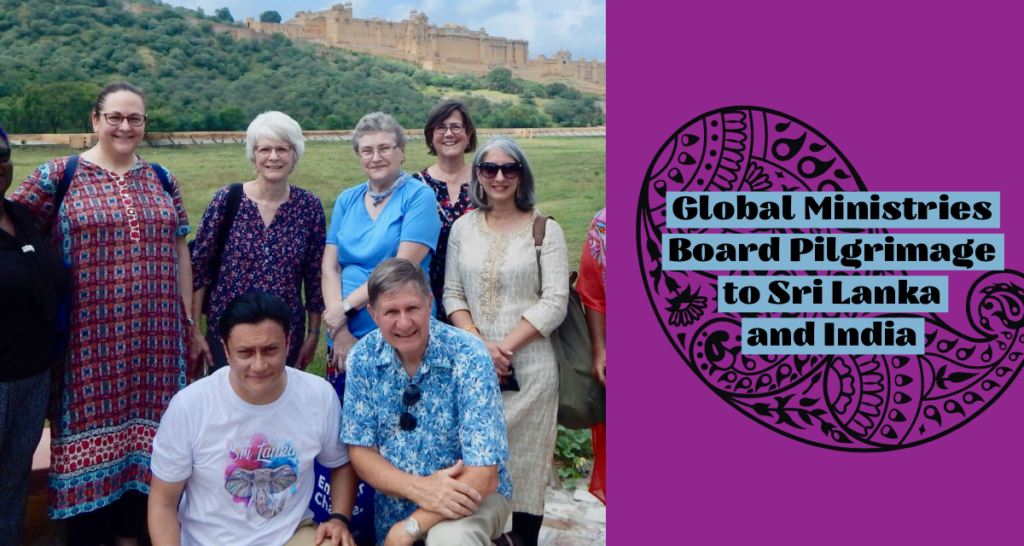Global Ministries Board Pilgrimage to Sri Lanka and India, September 2019
As part of the Southern Asia Initiative, seven members of the Common Global Ministries Board traveled to Sri Lanka and India in September. There, they met and visited projects of various Global Ministries’ partners to celebrate relationships and to walk Together in Hope. The following reflections will take us through their pilgrimage around these colorful and vibrant countries.
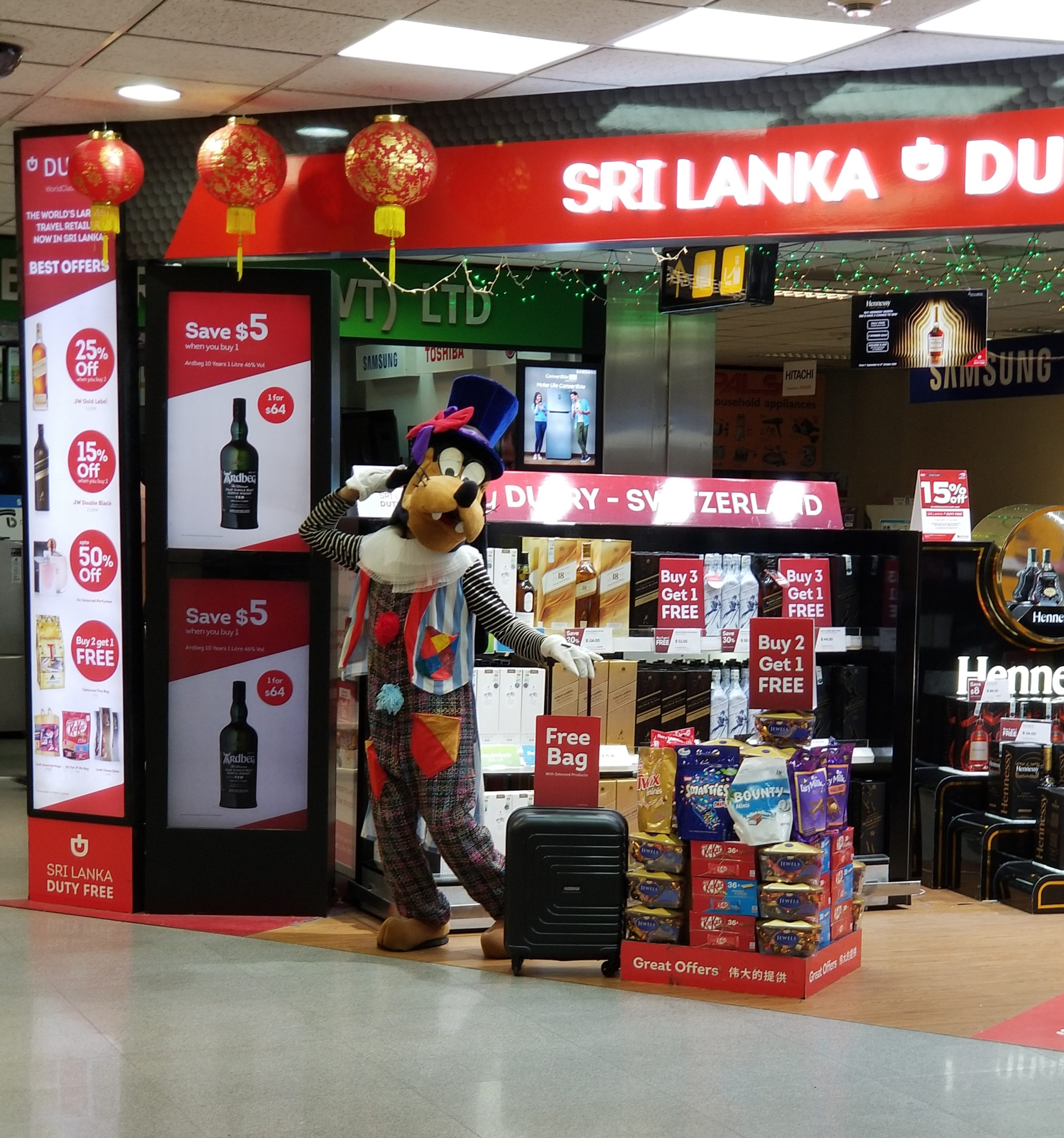 Day One – Sept. 15 – Laverne Thorpe
Day One – Sept. 15 – Laverne Thorpe
First Day in Sri Lanka
After all of our preparations, we are finally here in Colombo, Sri Lanka. We left Chicago on Friday evening and arrived in Sri Lanka early Sunday morning. Even though we have been traveling for several hours, we have lost a day somewhere along the way and I have not had much sleep. I am wide awake and excited. I feel a deep sense of gratitude to God for just being on this trip, for safe travels, for the opportunity to learn. As we exit immigration, the first things we see are the duty-free stores. At the door of one store is someone dressed as Goofy waving at us. Most of the stores are selling the usual duty-free items of liquor, perfume, chocolates, etc. But there are quite a few stores selling appliances, stoves, refrigerators, washers and dryers. Dorothy, we’re not in Kansas anymore.
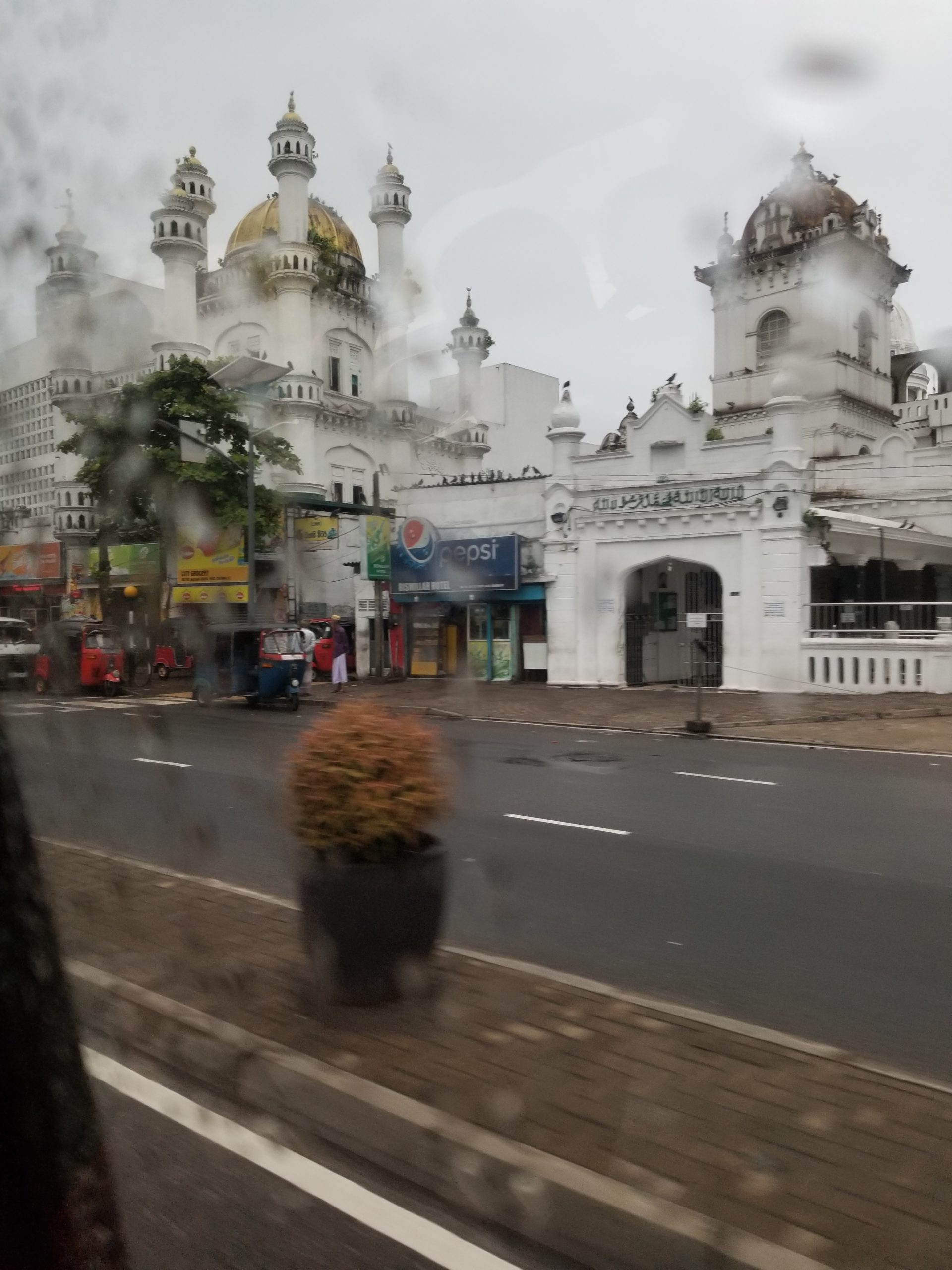 We are warmly greeted by Rev. Earl Solomon and take a 45-minute ride to our hotel. The sights along the way assure me we are in another world. Women wearing colorful saris, lots of three-wheeled taxis, cows in the road, different sights and smells. We get our first taste of the local cuisine at the hotel’s breakfast buffet. I am pleasantly surprised by the good food and the beautiful ambiance of the dining room.
We are warmly greeted by Rev. Earl Solomon and take a 45-minute ride to our hotel. The sights along the way assure me we are in another world. Women wearing colorful saris, lots of three-wheeled taxis, cows in the road, different sights and smells. We get our first taste of the local cuisine at the hotel’s breakfast buffet. I am pleasantly surprised by the good food and the beautiful ambiance of the dining room.
After a refreshing nap, we head to the Church of the American Ceylon Mission. We are joyfully greeted by the church officers and members with hugs and handmade gifts. We are treated as honored guests. After introductions, we settle down for an enlightening program that includes an extensive church history narrative. We are given a broad 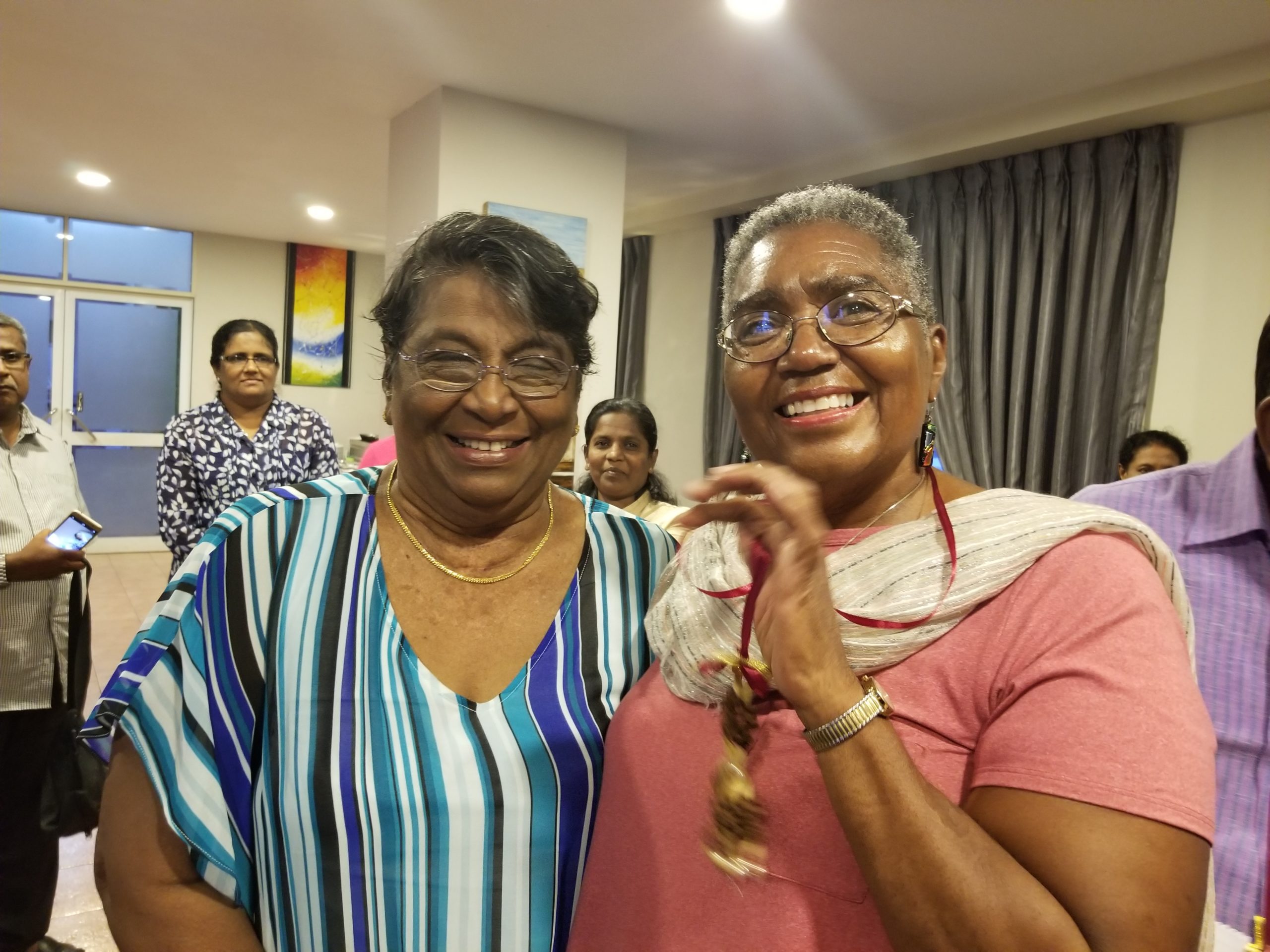 overview of the current political climate in the country, the church’s mission, and goals for the future. I am truly impressed with the scope and breadth of the church’s mission work. In spite of the hardships they have faced from a painful church split, religious discrimination, racial discrimination, and fallout and fear resulting from the recent bombings, they are serving the needs of their communities in meaningful ways. They are determined to heed God’s word to “feed my sheep.” As with the two fish and five loaves of bread, God has a way of multiplying a little and making it go farther than we can ever imagine. God is multiplying the efforts of the CACM to serve and address the needs of His people.
overview of the current political climate in the country, the church’s mission, and goals for the future. I am truly impressed with the scope and breadth of the church’s mission work. In spite of the hardships they have faced from a painful church split, religious discrimination, racial discrimination, and fallout and fear resulting from the recent bombings, they are serving the needs of their communities in meaningful ways. They are determined to heed God’s word to “feed my sheep.” As with the two fish and five loaves of bread, God has a way of multiplying a little and making it go farther than we can ever imagine. God is multiplying the efforts of the CACM to serve and address the needs of His people.
Day 2 – Sept. 16 – Margee Frey
Eyes Opened and Hearts Filled
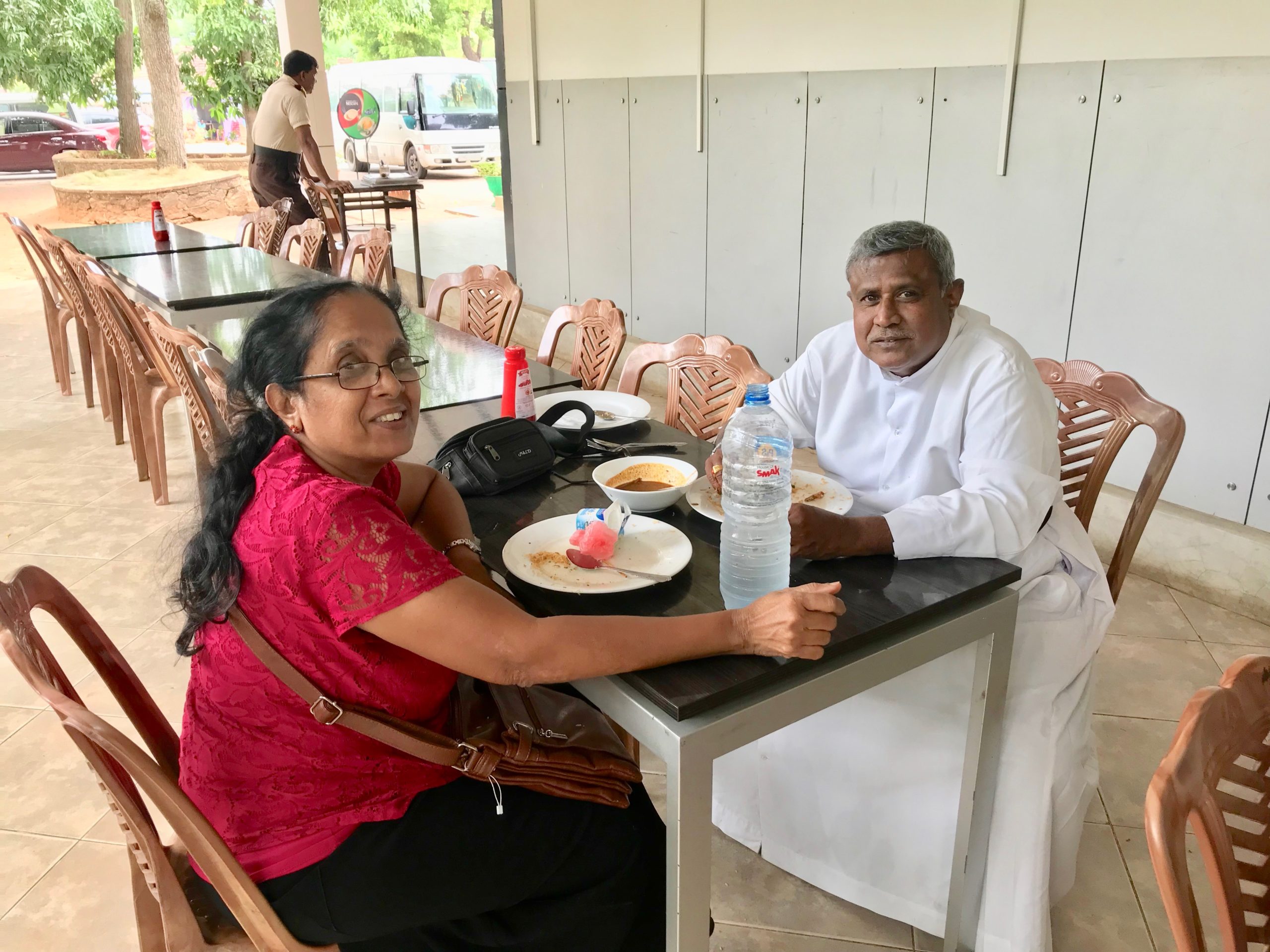 We were up early this morning to pack our bags and take in the beautiful buffet breakfast at the Renuka Hotel — complete with curries, soup, fresh fruit, beverages, and made-to-order eggs. As we gathered for our trip to Batticaloa on the east coast, we were met by Pastor Earl Solomon of Colombo, Rev. T. Thevenesan, President of CACM from Jaffna, and his wife, Karen, who will be accompanying us here in Sri Lanka. At 8:30 we boarded one bus large enough for the 13 of us and our baggage and began the “6-hour” trip across the island.
We were up early this morning to pack our bags and take in the beautiful buffet breakfast at the Renuka Hotel — complete with curries, soup, fresh fruit, beverages, and made-to-order eggs. As we gathered for our trip to Batticaloa on the east coast, we were met by Pastor Earl Solomon of Colombo, Rev. T. Thevenesan, President of CACM from Jaffna, and his wife, Karen, who will be accompanying us here in Sri Lanka. At 8:30 we boarded one bus large enough for the 13 of us and our baggage and began the “6-hour” trip across the island.
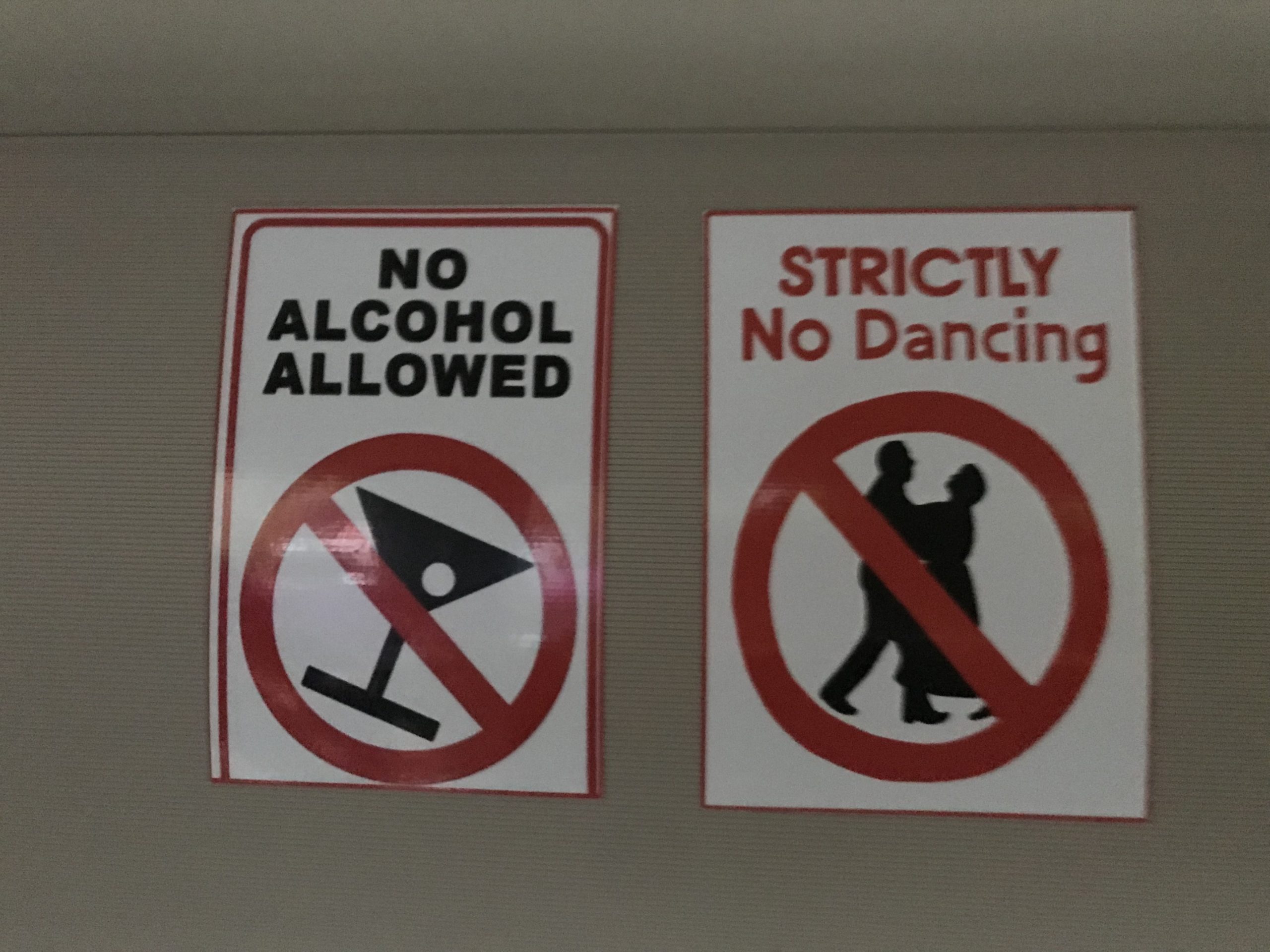 Right away some of us noticed the rules posted on the wall of the rented bus: “No Alcohol” and “Strictly: No Dancing.” Each was accompanied by an appropriate graphic – a cocktail glass for one and a couple dancing the waltz for the other, both with a red circle and line through them. This got us off to a happy start full of laughter which increased when we spotted a sign on the street in front of a girls’ school that showed a bugle with a red line through it! Mark told Marcy she would have to find a different spot to play her trumpet since the sign clearly showed that trumpet-playing was forbidden! Jean surmised that the sign meant it was a quiet area so we should not beep our horn, but the damage was already done – our sides ached from the laughing. We later learned that “No Dancing” meant “No Standing” as the movement of the bus would dangerously cause anyone out of their seat to “dance.”
Right away some of us noticed the rules posted on the wall of the rented bus: “No Alcohol” and “Strictly: No Dancing.” Each was accompanied by an appropriate graphic – a cocktail glass for one and a couple dancing the waltz for the other, both with a red circle and line through them. This got us off to a happy start full of laughter which increased when we spotted a sign on the street in front of a girls’ school that showed a bugle with a red line through it! Mark told Marcy she would have to find a different spot to play her trumpet since the sign clearly showed that trumpet-playing was forbidden! Jean surmised that the sign meant it was a quiet area so we should not beep our horn, but the damage was already done – our sides ached from the laughing. We later learned that “No Dancing” meant “No Standing” as the movement of the bus would dangerously cause anyone out of their seat to “dance.”
We began in light rain through the streets of Colombo, past the Lotus Tower, Victoria Park and Town Hall with its British Colonial architecture. The streets were busier this morning than they had been on Sunday. Our driver expertly threaded his way through the traffic that did not stay in organized lanes but managed to fill every bit of space on the road. As we left Colombo behind, the speed picked up a bit as did the horn-blowing. If there was any perceived room, a vehicle would pass, even if it meant having two vehicles abreast in the left lane with oncoming traffic in the right lane on the two-lane road. Every pass was signaled by a beep of the horn and we saw no instances of what appeared to be angry drivers or road rage. We were thankful we were not the ones doing the driving. And we saw no accidents!
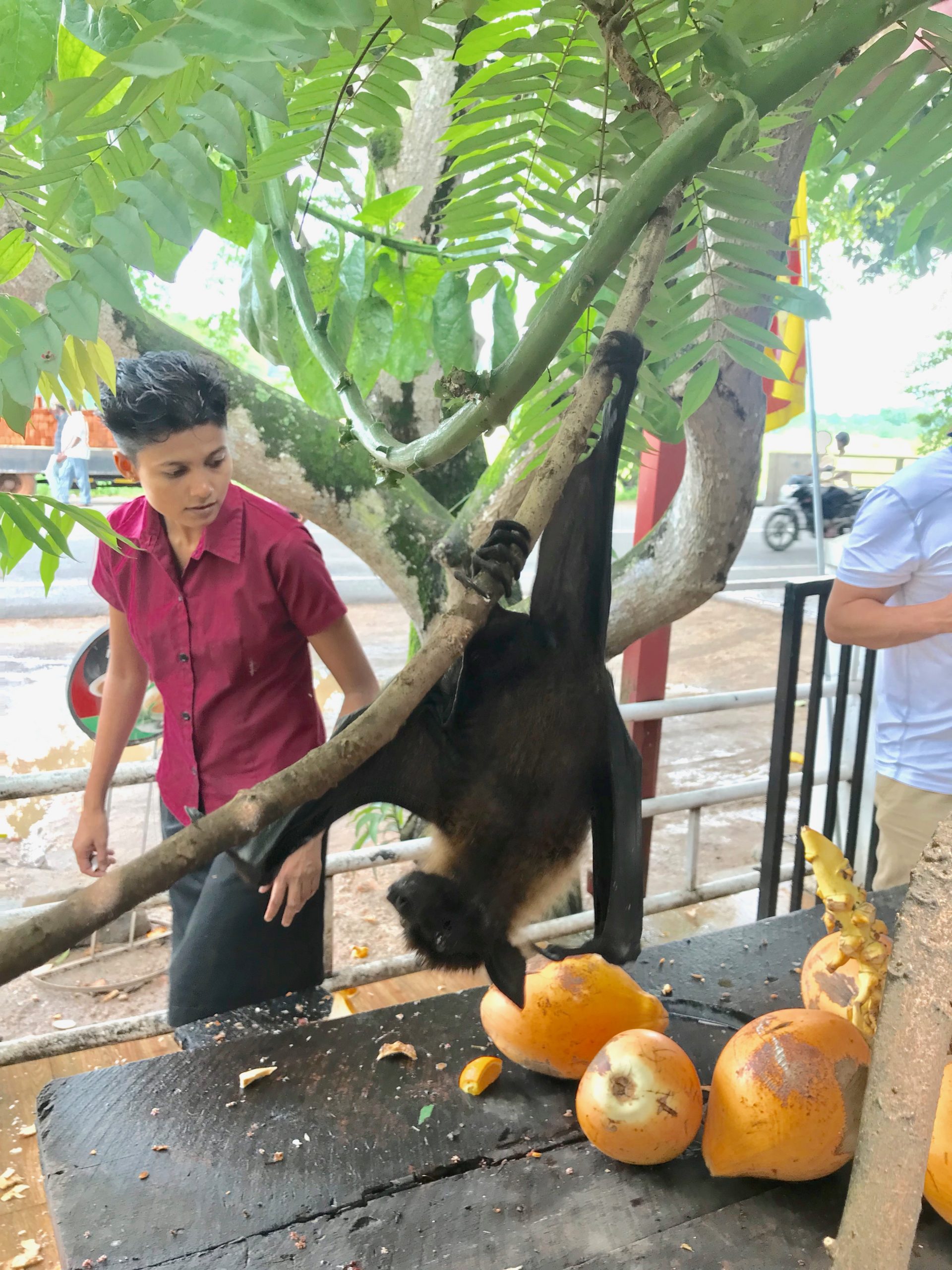 We drove for several hours sharing the road with cars, trucks, buses of all sizes, three-wheeled ‘autos’ (aka ‘tuk tuks’), stray cows and dogs, and occasional ox carts and horse wagons. We saw women in burkas riding on the back of motorcycles and women driving themselves on scooters. Later, we learned that women are not permitted to drive their own motorcycles, only scooters. We passed towns, villages, shops, fruit and vegetable markets, small coconut and pineapple plantations, and a few rice paddies before our rest stop where we purchased baked goods and beverages. Cyndy made her way to a table where a woman was cutting coconuts to serve with a straw. Hanging above the table was a huge bat who was thoroughly enjoying the discarded coconut tops and orange sections the woman gave him!
We drove for several hours sharing the road with cars, trucks, buses of all sizes, three-wheeled ‘autos’ (aka ‘tuk tuks’), stray cows and dogs, and occasional ox carts and horse wagons. We saw women in burkas riding on the back of motorcycles and women driving themselves on scooters. Later, we learned that women are not permitted to drive their own motorcycles, only scooters. We passed towns, villages, shops, fruit and vegetable markets, small coconut and pineapple plantations, and a few rice paddies before our rest stop where we purchased baked goods and beverages. Cyndy made her way to a table where a woman was cutting coconuts to serve with a straw. Hanging above the table was a huge bat who was thoroughly enjoying the discarded coconut tops and orange sections the woman gave him!
As we continued on our way, we noted many Buddhist shrines and Hindu Temples with the occasional Mosque and Christian Church or shrine tucked into market areas, on hillsides, and even in small islands in the road. Signs were written in Sinhalese and Tamil and sometimes also in English. We passed very few areas where we did not see people working, walking, waiting for a bus or otherwise traveling. As the day wore on, we saw children of all ages walking home in their school uniforms. We later learned at our evening program that, per official guidelines, the percentage of Sri Lankans living in extreme poverty is low although a high percentage are vulnerable.
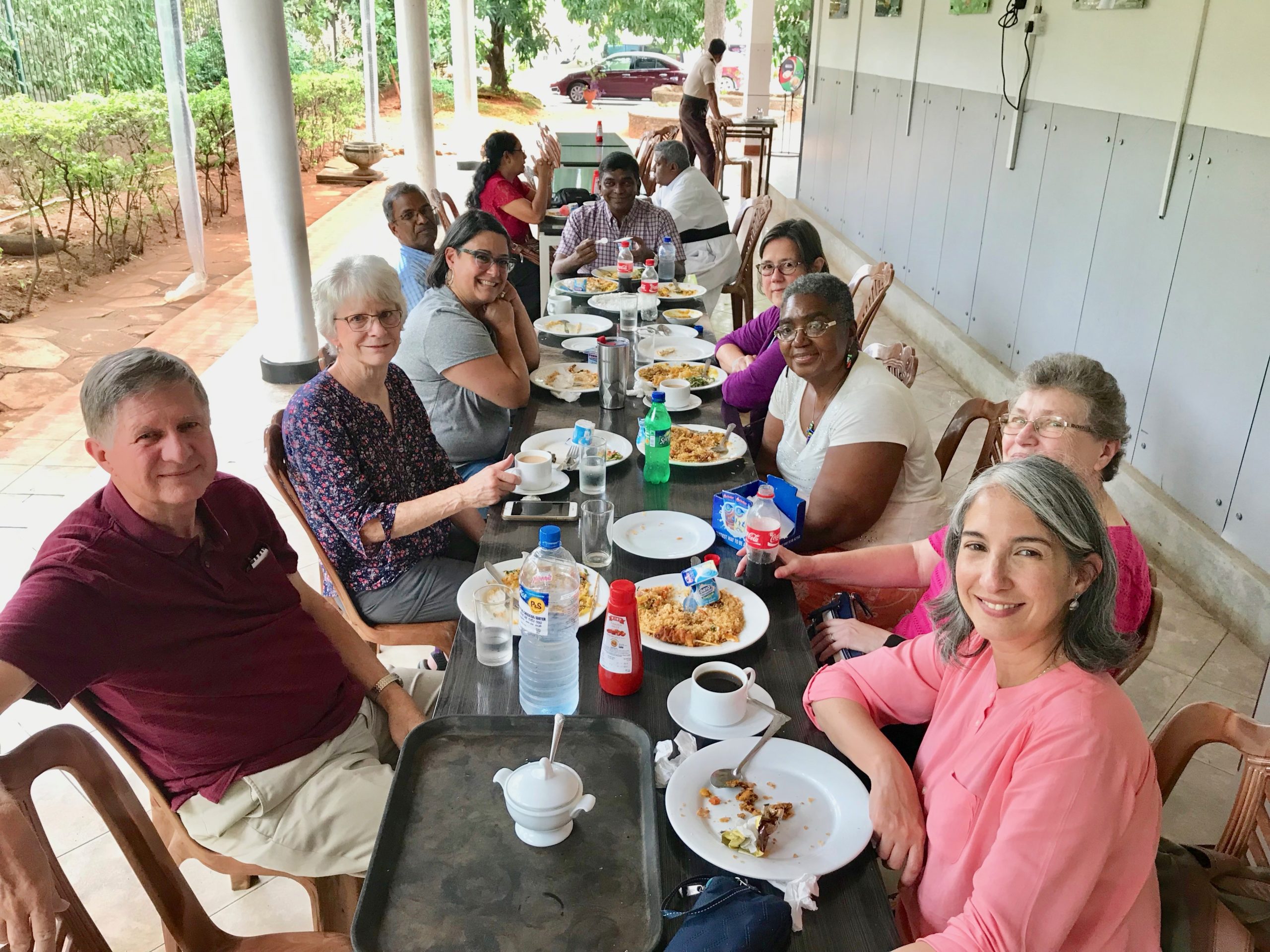 Our lunch at a stop along the way proved too spicy for some of the Western palates in the group.
Our lunch at a stop along the way proved too spicy for some of the Western palates in the group.
Mark followed our route on his map and saw that we were north of the central highlands where most of the tea is grown but would be going near a National Park. Back on the road traveling east toward that area, we saw some low mountains in the distance and were excited to see an elephant, some peacocks, lots of monkeys walking along electrical wires and tree branches, and bats hanging about.
It was a long trip but one full of laughter as the group seems to thoroughly enjoy being together. We were tired but full of wonder as we took in the sights of this beautiful and diverse country. Nine hours after the start of our 6-hour trip, we finally reached Batticaloa and the Riviera Resort quickly checked into our rooms and reboarded the bus for the 5-minute trip to St John’s Church where we were graciously welcomed by a delegation of inter-religious leaders who had been waiting for us.
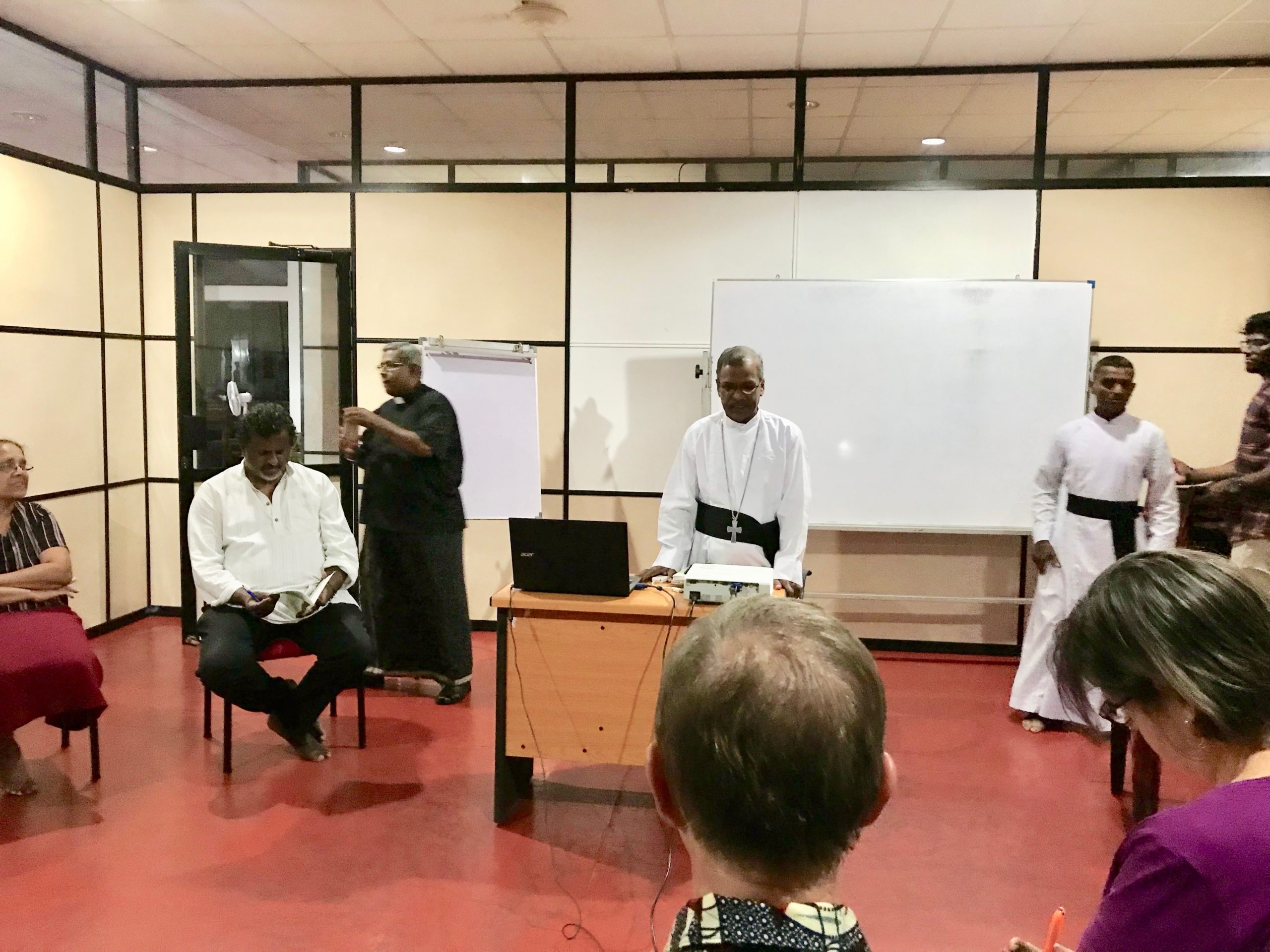 We were ushered into a conference room where our program began with prayer and words of welcome by Rev. Thevenesan, the President of CACM (Church of the American Ceylon Mission) and Darshan Ambalavanar, an international member of our Common Global Ministries Board. All in attendance introduced themselves revealing the religious diversity of the group. Several speakers addressed current issues in the country. It was clear the Easter Day bombings are an extremely fresh and difficult part of the country’s recent history and the rise of religious fundamentalism is of grave concern. Father Louie from the Social Justice arm of the Catholic Church spoke of the criticality of the upcoming Presidential and Parliamentary elections. Muslim and Christian minorities must be represented, and dialogue is the key. Sarala Immanuel spoke of women’s issues in this patriarchal society. Women need more representation in parliament (currently 5%) and women’s rights must be strengthened. A Muslim theologian from the Inter-religious Forum stressed the need to reorganize the Muslim community to have a close relationship and good rapport with other
We were ushered into a conference room where our program began with prayer and words of welcome by Rev. Thevenesan, the President of CACM (Church of the American Ceylon Mission) and Darshan Ambalavanar, an international member of our Common Global Ministries Board. All in attendance introduced themselves revealing the religious diversity of the group. Several speakers addressed current issues in the country. It was clear the Easter Day bombings are an extremely fresh and difficult part of the country’s recent history and the rise of religious fundamentalism is of grave concern. Father Louie from the Social Justice arm of the Catholic Church spoke of the criticality of the upcoming Presidential and Parliamentary elections. Muslim and Christian minorities must be represented, and dialogue is the key. Sarala Immanuel spoke of women’s issues in this patriarchal society. Women need more representation in parliament (currently 5%) and women’s rights must be strengthened. A Muslim theologian from the Inter-religious Forum stressed the need to reorganize the Muslim community to have a close relationship and good rapport with other 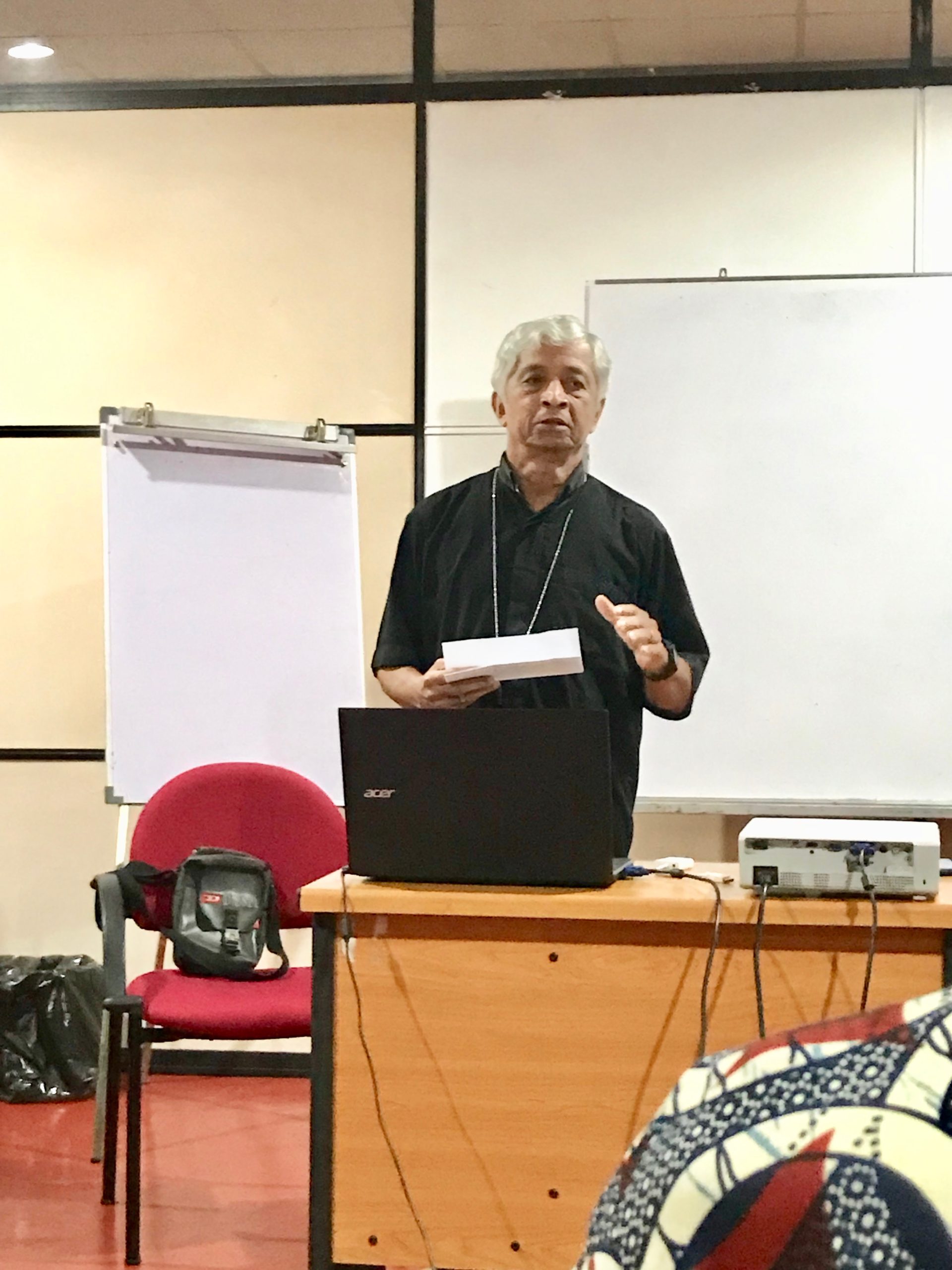 groups. The 4/21/2019 bombings by radicalized militant Islam were a curse to the island and denounced by the majority though the result is that the Muslim community is targeted. Immediately after the bombings, leaders from CACM and others reached out to the community in solidarity and support. It was inspiring to see the determination and dedication of these leaders to work together towards peace and justice in Sri Lanka.
groups. The 4/21/2019 bombings by radicalized militant Islam were a curse to the island and denounced by the majority though the result is that the Muslim community is targeted. Immediately after the bombings, leaders from CACM and others reached out to the community in solidarity and support. It was inspiring to see the determination and dedication of these leaders to work together towards peace and justice in Sri Lanka.
The evening ended with a beautiful buffet of curries, vegetables, chicken, and mutton dishes, fresh fruit, and sweets for dessert. There was something for everyone – hot and spicy, mild, no hot spice at all, and vegetarian.
Our eyes had been opened and our hearts filled by so much that we had seen and heard – a beautiful country and dedicated, faith-filled people working to do God’s will.
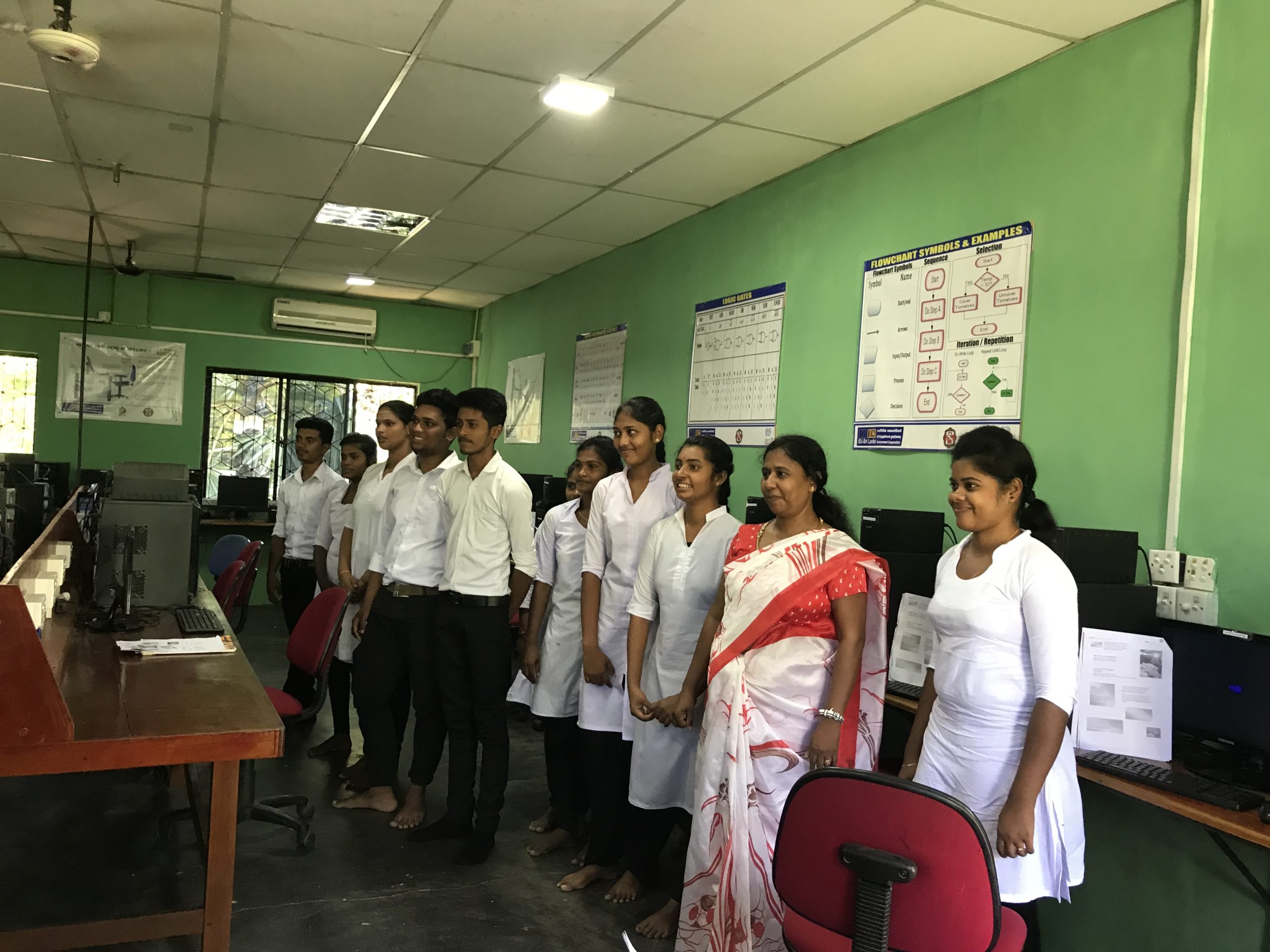
Day 3 – Sept. 17 – Mark Frey
A Day of Hope
Today, we visited the Churches of the American Ceylon Mission (CACM) in Sri Lanka, that tear-shaped island off the southeast coast of India. The 22 million people are 75% Sinhalese, 11% Tamil, with the balance a wide mix of other groups. The population is 70% Buddhism, 13% Hindu, 10% Islam and 7% Christian. Sri Lanka is still recovering from a 26-year civil war which ended in 2009 killing over 60,000 and displacing 300,000, leaving thousands of widows and orphans. The 2004 tsunami killed over 35,000 on the island. The recent Easter Sunday bombings on April 21, 2019, killed 259 and wounded 500 in three locations (one in Batticaloa) and have renewed religious tensions. Our partners live and work in this minority setting with many challenges.
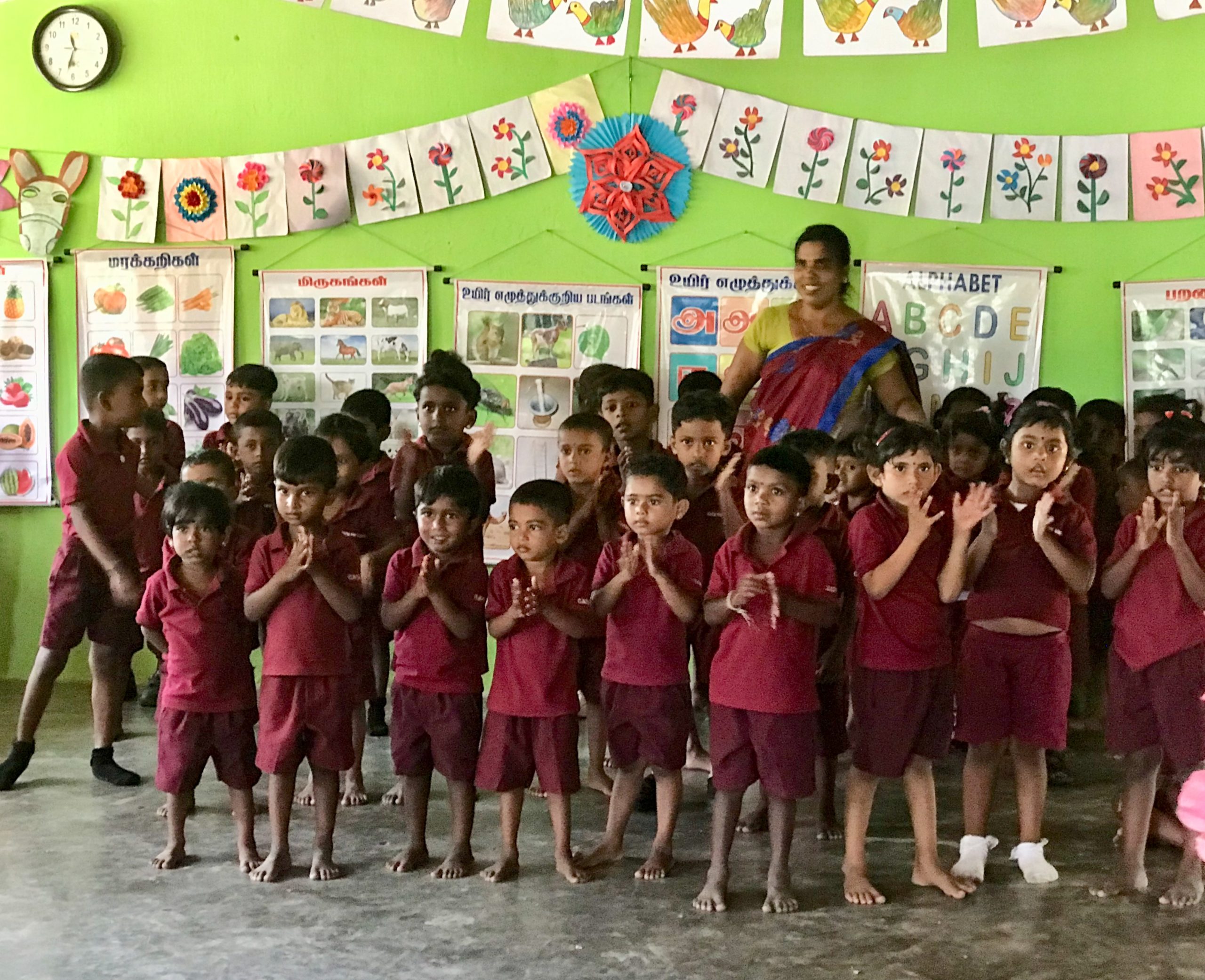 We visited our CACM partners in Batticaloa in the Eastern Region on the east coast, to learn about their work. (There are 17 churches and 4,000 members). During one day we traveled around the community seeing the work of our churches. We visited a vocational school where students are eagerly learning a trade. We greeted 35 pre-school children who gave us flower garlands and sang a song. We met with a women’s collective who have pooled their money to create micro-financing to improve their lives. We played with 12 boys at the Boys Home seeing how they are growing and
We visited our CACM partners in Batticaloa in the Eastern Region on the east coast, to learn about their work. (There are 17 churches and 4,000 members). During one day we traveled around the community seeing the work of our churches. We visited a vocational school where students are eagerly learning a trade. We greeted 35 pre-school children who gave us flower garlands and sang a song. We met with a women’s collective who have pooled their money to create micro-financing to improve their lives. We played with 12 boys at the Boys Home seeing how they are growing and 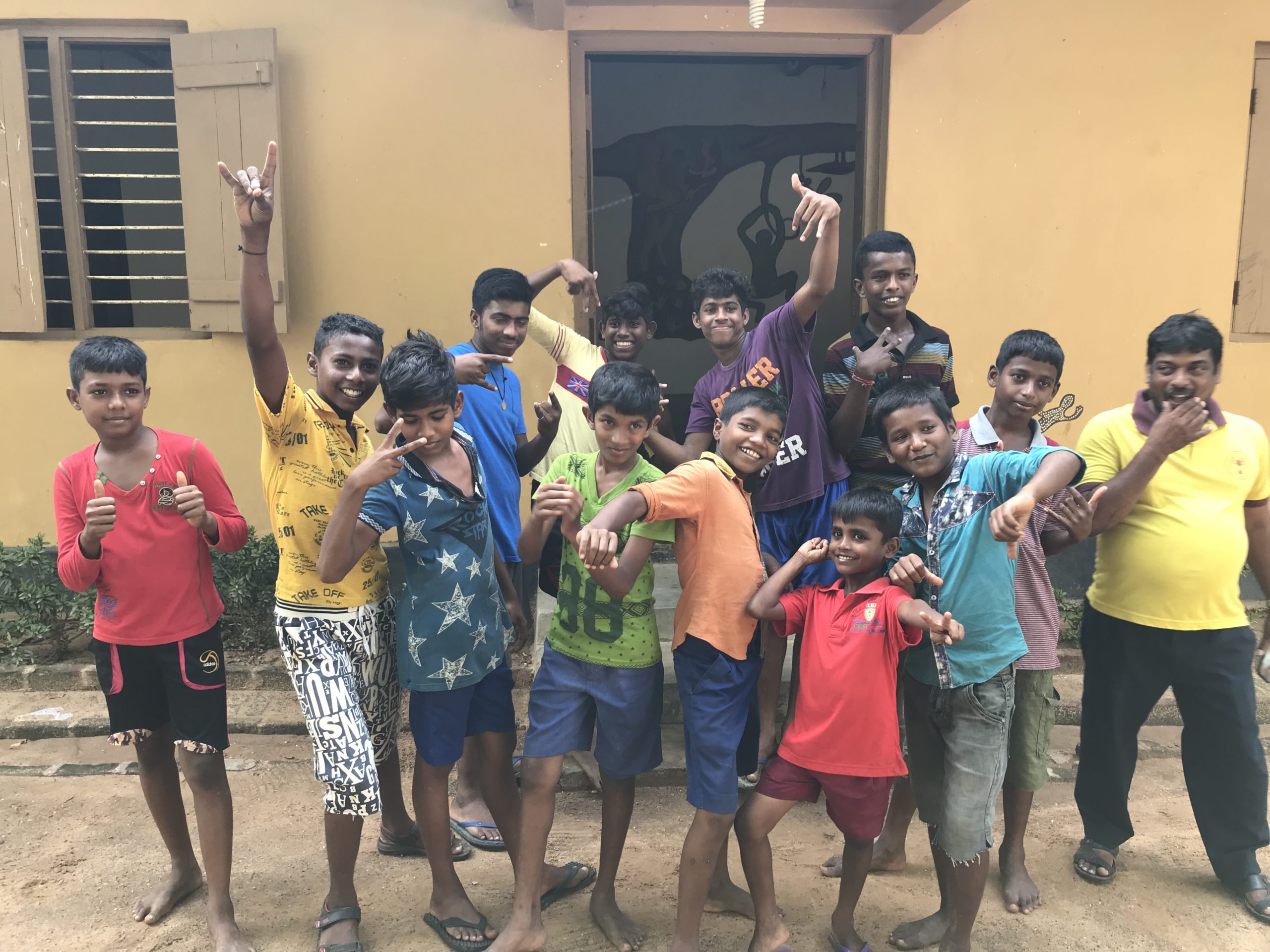 blossoming. We gathered with a dedicated and energized clergy to hear of their work in these programs and with youth in the surrounding area. We heard from area interfaith leaders seeking to create a community of understanding and peace. We heard about the “She Will Rise” women’s program that empowers women in local communities.
blossoming. We gathered with a dedicated and energized clergy to hear of their work in these programs and with youth in the surrounding area. We heard from area interfaith leaders seeking to create a community of understanding and peace. We heard about the “She Will Rise” women’s program that empowers women in local communities.
After our visits, we were amazed and rejoiced over what we had seen and experienced! Despite the great challenges confronting the CACM churches, they are daily moving to give hope to those who see little hope. Little children are singing, women are empowered, students are getting educated, boys are cared for, youth are learning leadership skills, and the clergy are working for peace. It was a day of hope! We celebrate the work and faithfulness of our CACM partners! We are Together in Hope!
Day 4 – Sept. 18 Yesenia Menendez
Who is Our Neighbor?
It is 4:15 am and we are getting ready to embark on the last trip between Batticaloa and Colombo, Sri Lanka. I say goodbye to beautiful people, places, stories that have touched deep areas of my heart that had not been previously touched. We have 6 hours left to get to the airport, and I cannot help but be silent, in deep meditation before the vast stage God has painted, before the genuine and transparent smile of those who curiously look at us and smile. How small I feel before such greatness … brave, resilient, big, sad, beautiful people … people of God who are doing what was entrusted to us, love your neighbor as yourself.
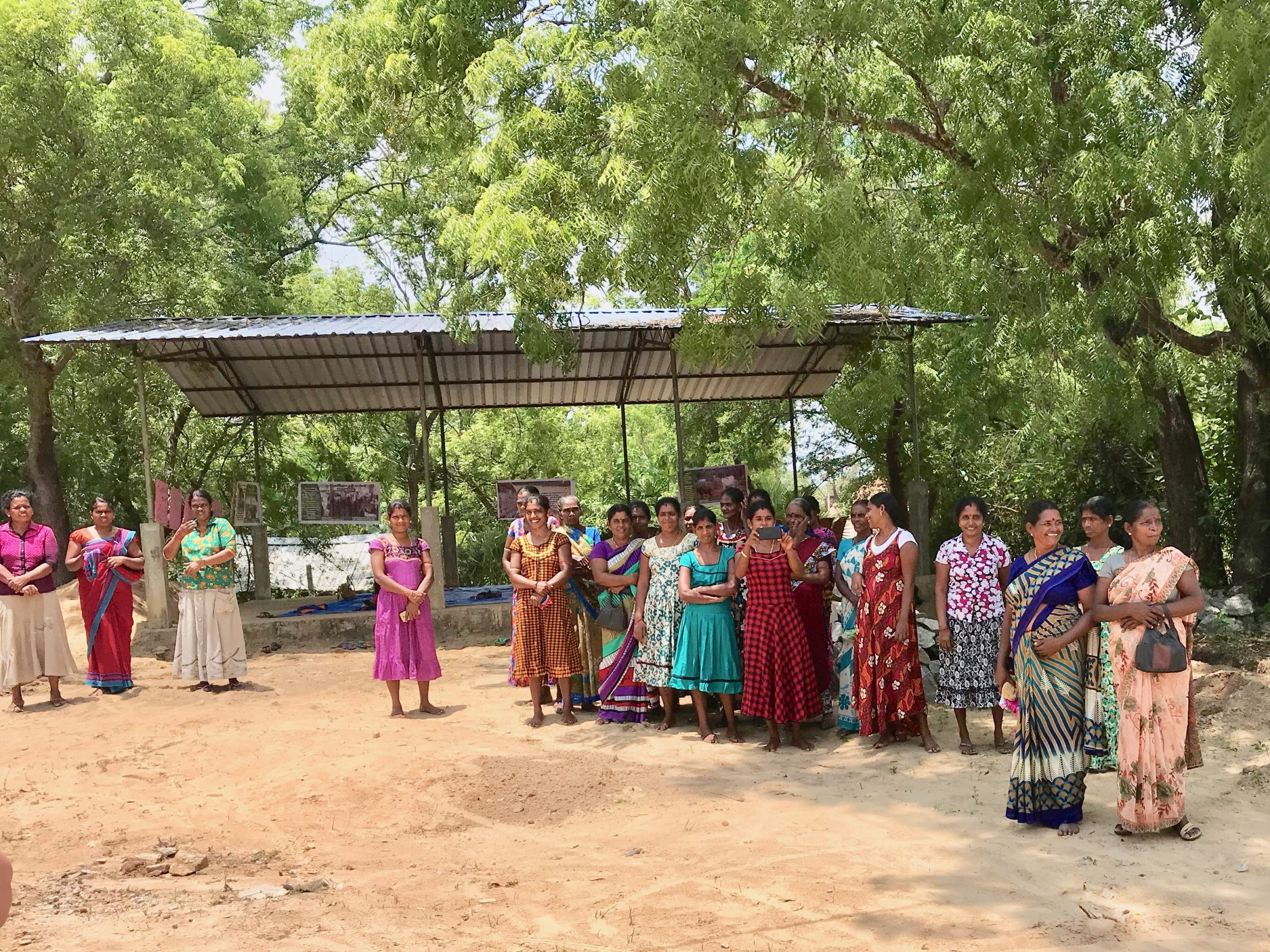 We arrive at the airport to continue the pilgrimage to India. There we merge into warm hugs of thanks and admiration with our new friend Bishop Solomon, and we pray together and continue walking toward what awaits us. How beautiful are the people of Sri Lanka, how bright are their colors, how clear their eyes. It is strange but I feel at home, I feel comfortable, I feel part of something that I cannot fully understand but that attracts and calls me. I continue in meditation, processing what I feel, what I experienced, what I saw, what I took, and what I left. But suddenly the question arises, the one that has been with me … Who is my neighbor? The one who looks like me? The one who thinks like me? The one who speaks like me? The one who uses my solutions to resolve their difficulties? … Who is my neighbor? Am I your neighbor? Am I a good neighbor?
We arrive at the airport to continue the pilgrimage to India. There we merge into warm hugs of thanks and admiration with our new friend Bishop Solomon, and we pray together and continue walking toward what awaits us. How beautiful are the people of Sri Lanka, how bright are their colors, how clear their eyes. It is strange but I feel at home, I feel comfortable, I feel part of something that I cannot fully understand but that attracts and calls me. I continue in meditation, processing what I feel, what I experienced, what I saw, what I took, and what I left. But suddenly the question arises, the one that has been with me … Who is my neighbor? The one who looks like me? The one who thinks like me? The one who speaks like me? The one who uses my solutions to resolve their difficulties? … Who is my neighbor? Am I your neighbor? Am I a good neighbor?
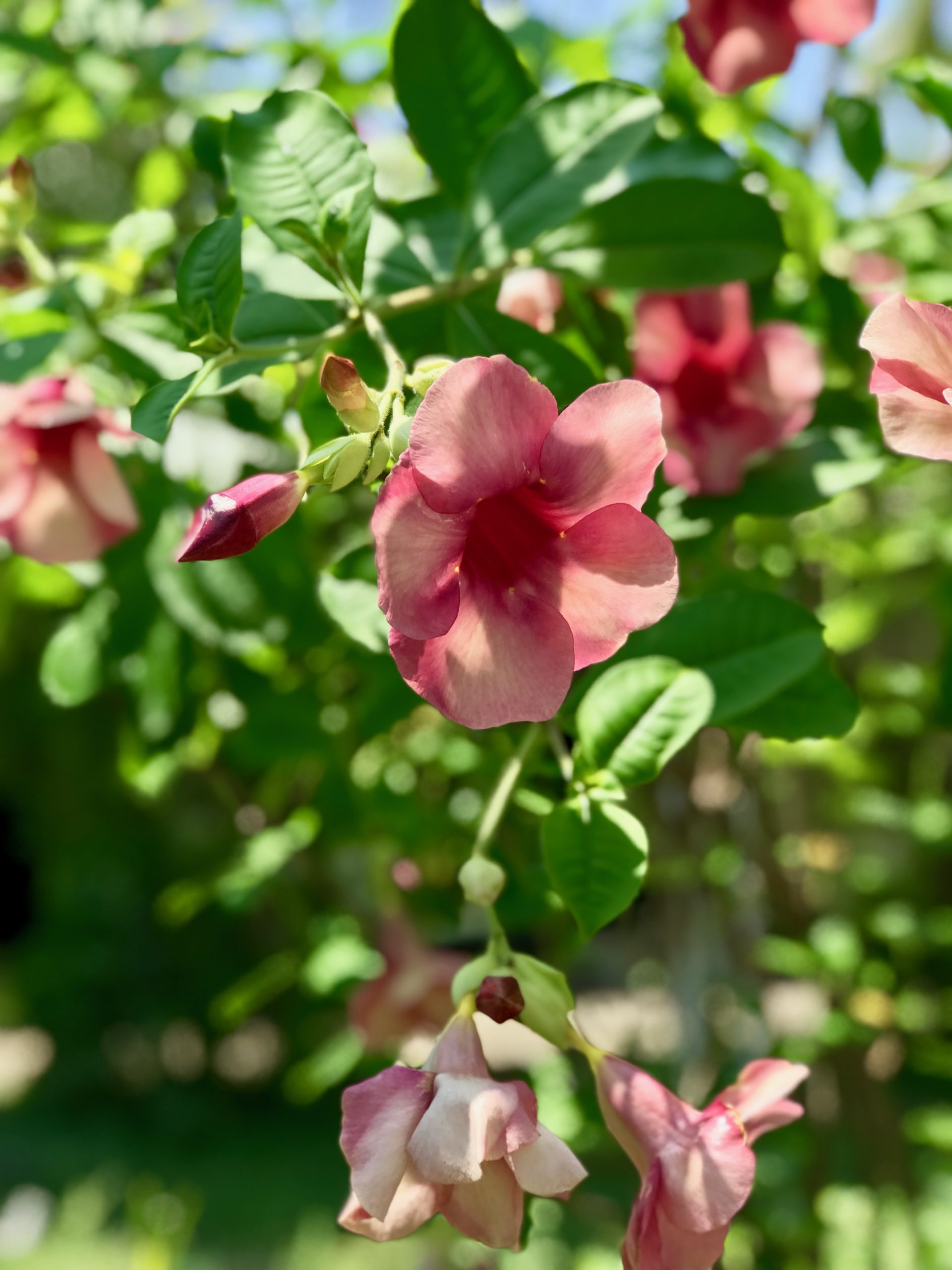 We arrived in India! WOW !! Smells, colors, sounds! I receive everything and I feel it at the same time, everything hits me at the same time. I like it. When we finally arrive at the hotel after a long journey, that question, that discomfort, that which continues to hit the intellect and the heart chases me into my room. Finally, I cry… I cry with shame, I cry for sadness, I cry with rage when I realize that I always knew what I carried but I dared not look at it straight. It is called privilege, the one we brought in a suitcase and thought we had left in the USA, the one that can hurt and mistreat others, the one that makes me think that I understand the difficulties of the other and that I can solve them with my perfect and unique solution, that even in the distance reminds me that the use of my language bothers and offends the other. How sad to have to be so far away and realize that we have not understood anything. You take care of your neighbor, you accompany them. The neighbor is encouraged, loved, and respected.
We arrived in India! WOW !! Smells, colors, sounds! I receive everything and I feel it at the same time, everything hits me at the same time. I like it. When we finally arrive at the hotel after a long journey, that question, that discomfort, that which continues to hit the intellect and the heart chases me into my room. Finally, I cry… I cry with shame, I cry for sadness, I cry with rage when I realize that I always knew what I carried but I dared not look at it straight. It is called privilege, the one we brought in a suitcase and thought we had left in the USA, the one that can hurt and mistreat others, the one that makes me think that I understand the difficulties of the other and that I can solve them with my perfect and unique solution, that even in the distance reminds me that the use of my language bothers and offends the other. How sad to have to be so far away and realize that we have not understood anything. You take care of your neighbor, you accompany them. The neighbor is encouraged, loved, and respected.
Blessed is India who touched me, who taught me, who gave me the courage to look at the discomfort face to face and name it. Blessed is India who transported me to my own story and returned me clearer, more complete, more neighborly, a better neighbor.
Day 5 – Sept. 19 – Marcy Gansler
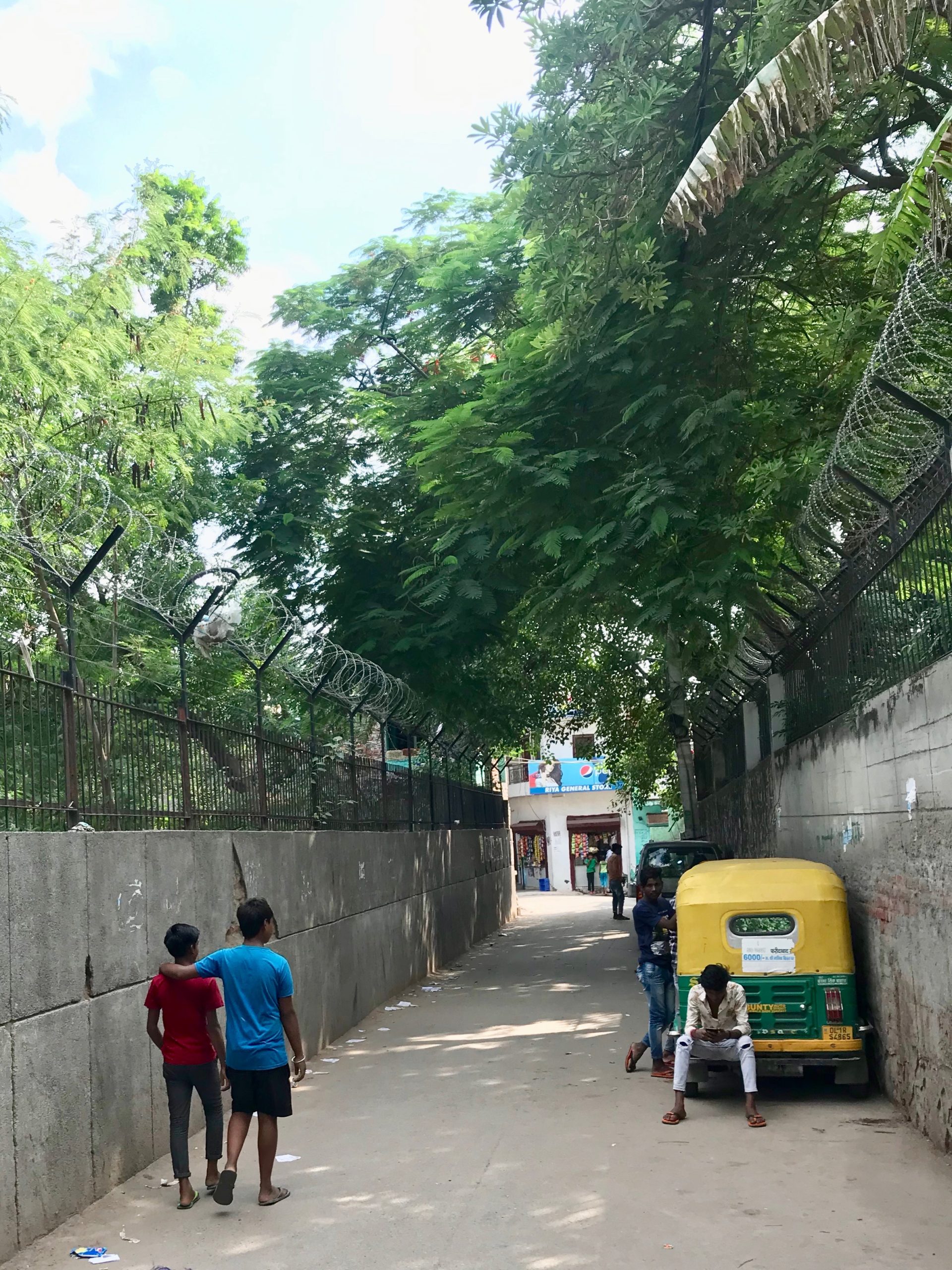 Do not fear! Even in your brokenness, God will give you strength and hold you up when you can’t hold yourself. Isaiah 41:10.
Do not fear! Even in your brokenness, God will give you strength and hold you up when you can’t hold yourself. Isaiah 41:10.
On this day, we spent the morning at the headquarters of the Church of South India. We worshipped with the staff there and brought greetings. Following worship, we heard presentations from organizations working for human rights, an end extreme poverty, and to empower those who are marginalized. We heard stories of brokenness. Broken communities, broken societies, broken spirits, broken bodies.
I think we have all experienced brokenness in our lives. We have experienced loss, grief, heartache, and heartbreak. Thinking of a life broken, it’s hard to fathom how people overcome the trauma of violence, poverty, discrimination, abuse, and systems of oppression that they have experienced. But God cherishes and uses broken people.
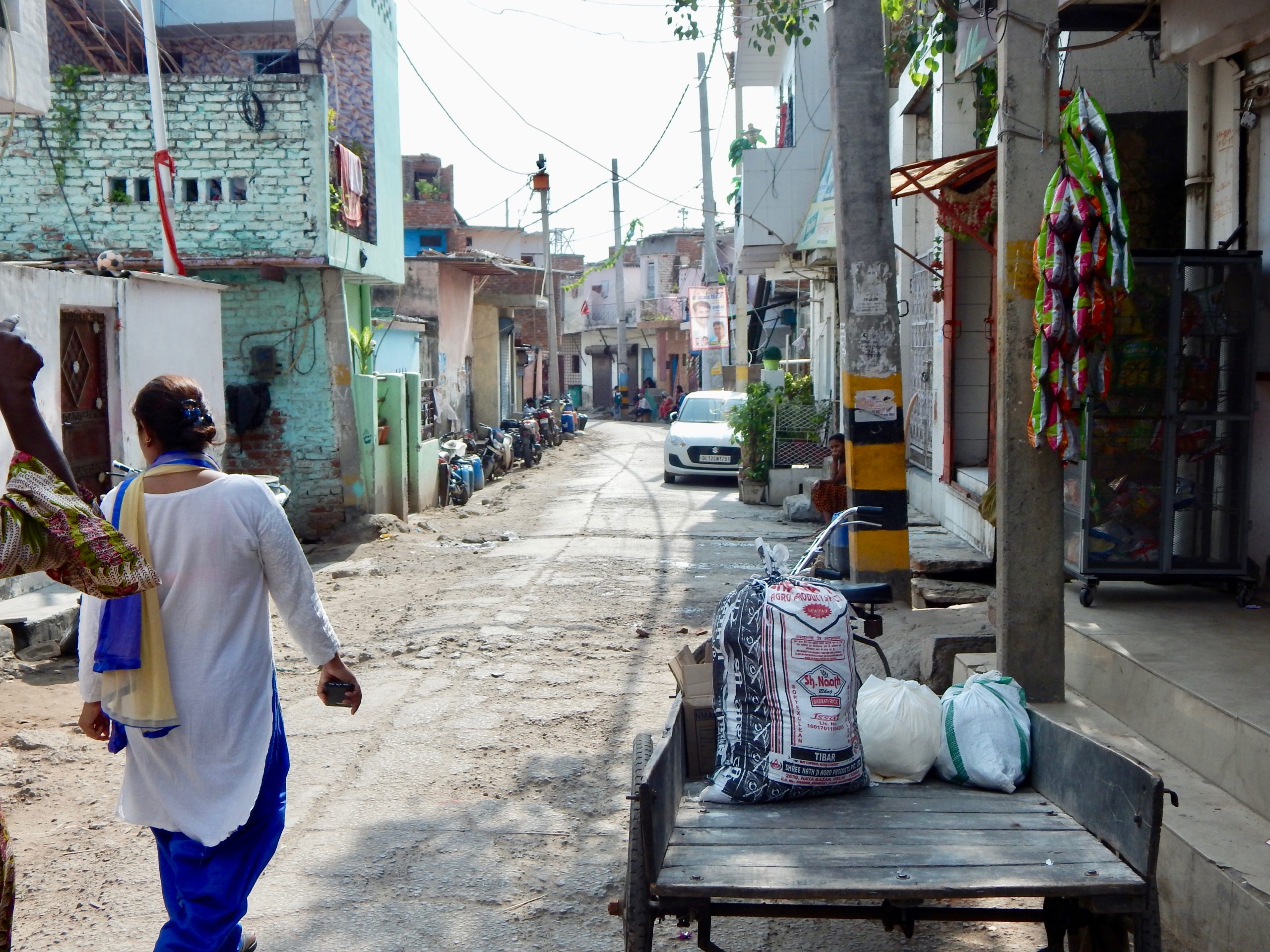 In the afternoon, our group split into two groups and visited two different slum communities in Delhi, India. These were places where the most difficult challenges were faced by those living in extreme poverty. One group visited with Indian Samaritans, an organization that serves economically underprivileged children to ensure education, empowerment, and employment. The group I was with visited a community where the Centre for Social Equity and Inclusion (CSEI) was involved.
In the afternoon, our group split into two groups and visited two different slum communities in Delhi, India. These were places where the most difficult challenges were faced by those living in extreme poverty. One group visited with Indian Samaritans, an organization that serves economically underprivileged children to ensure education, empowerment, and employment. The group I was with visited a community where the Centre for Social Equity and Inclusion (CSEI) was involved.
CSEI promotes direct involvement of communities that are generally excluded from civil society. Exclusion and discrimination against Dalit, Muslim, and tribal communities are still prevalent in Indian society, especially in access to education and employment.
CSEI helps develop and support centers run by members of the communities they serve, drawing leadership and priorities from the communities themselves. The goal of the work is to promote equal rights and opportunities for learning and leadership among children and young adults.
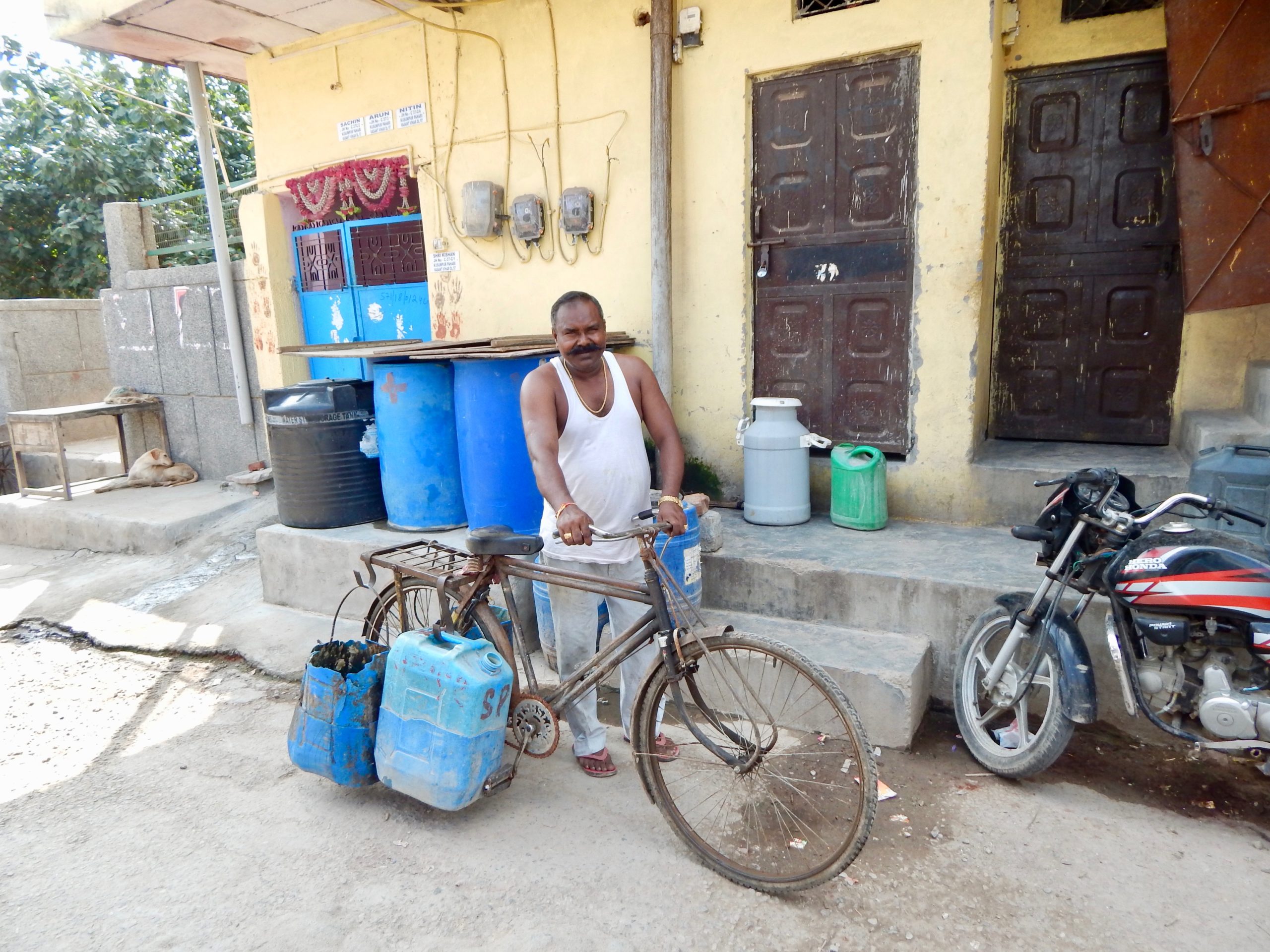 Walking through the slum area, we saw open troughs where wastewater and sewage ran to a pond downhill. We saw pigs feasting on garbage and cows roaming through the winding roads of the community. People mainly lived in buildings in this community, and many rode bicycles and motorbikes through the narrow streets as we walked to the community center.
Walking through the slum area, we saw open troughs where wastewater and sewage ran to a pond downhill. We saw pigs feasting on garbage and cows roaming through the winding roads of the community. People mainly lived in buildings in this community, and many rode bicycles and motorbikes through the narrow streets as we walked to the community center.
People stared at us as we walked in our small group. We were obviously outsiders. But what struck me was that, no matter how serious their faces were, as soon as I looked people in the eyes and smiled, they smiled back. The children giggled and nodded when we asked to take their photos. The motorbike riders patiently waited for us to get out of the way on the roads. The CSEI staff who led us made sure we got out of the way when a bull meandered down a narrow alley.
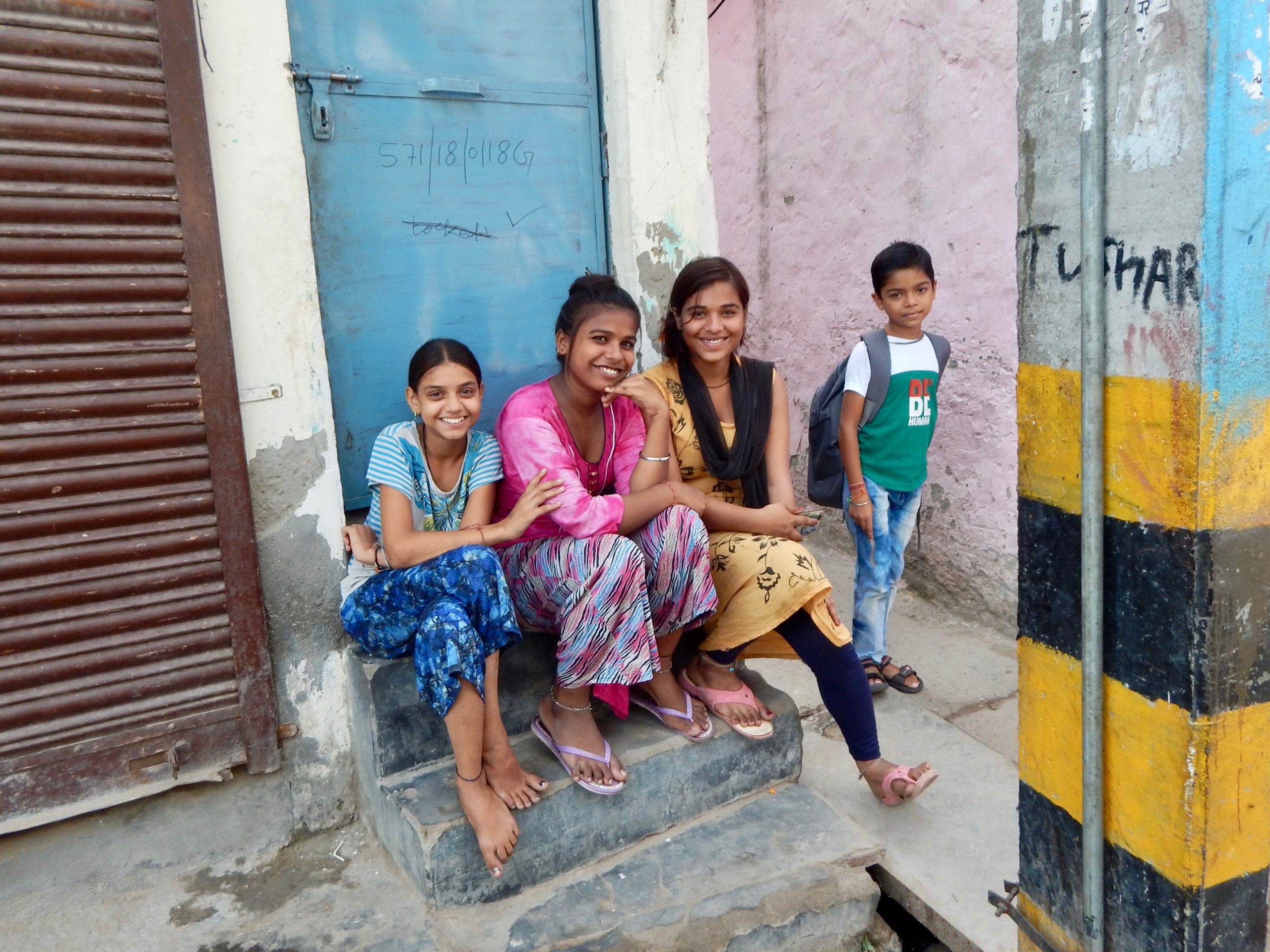 By the time we made it to the community center, we felt the warmth of the broad hospitality of the community. We removed our shoes and shuffled into the small building that was the community center. The room had a ceiling fan, a ceiling light, a refrigerator, some shelves with books, a table and a desk, and a computer desk with a computer. On one side of the room, more than a dozen women from the community sat waiting on the blankets and carpets that covered the floor. We sat on the floor or in chairs opposite them. Some of us took out our mobile phones or cameras to take photos. I chuckled as the women we were visiting also took out their phones and took photos of us.
By the time we made it to the community center, we felt the warmth of the broad hospitality of the community. We removed our shoes and shuffled into the small building that was the community center. The room had a ceiling fan, a ceiling light, a refrigerator, some shelves with books, a table and a desk, and a computer desk with a computer. On one side of the room, more than a dozen women from the community sat waiting on the blankets and carpets that covered the floor. We sat on the floor or in chairs opposite them. Some of us took out our mobile phones or cameras to take photos. I chuckled as the women we were visiting also took out their phones and took photos of us.
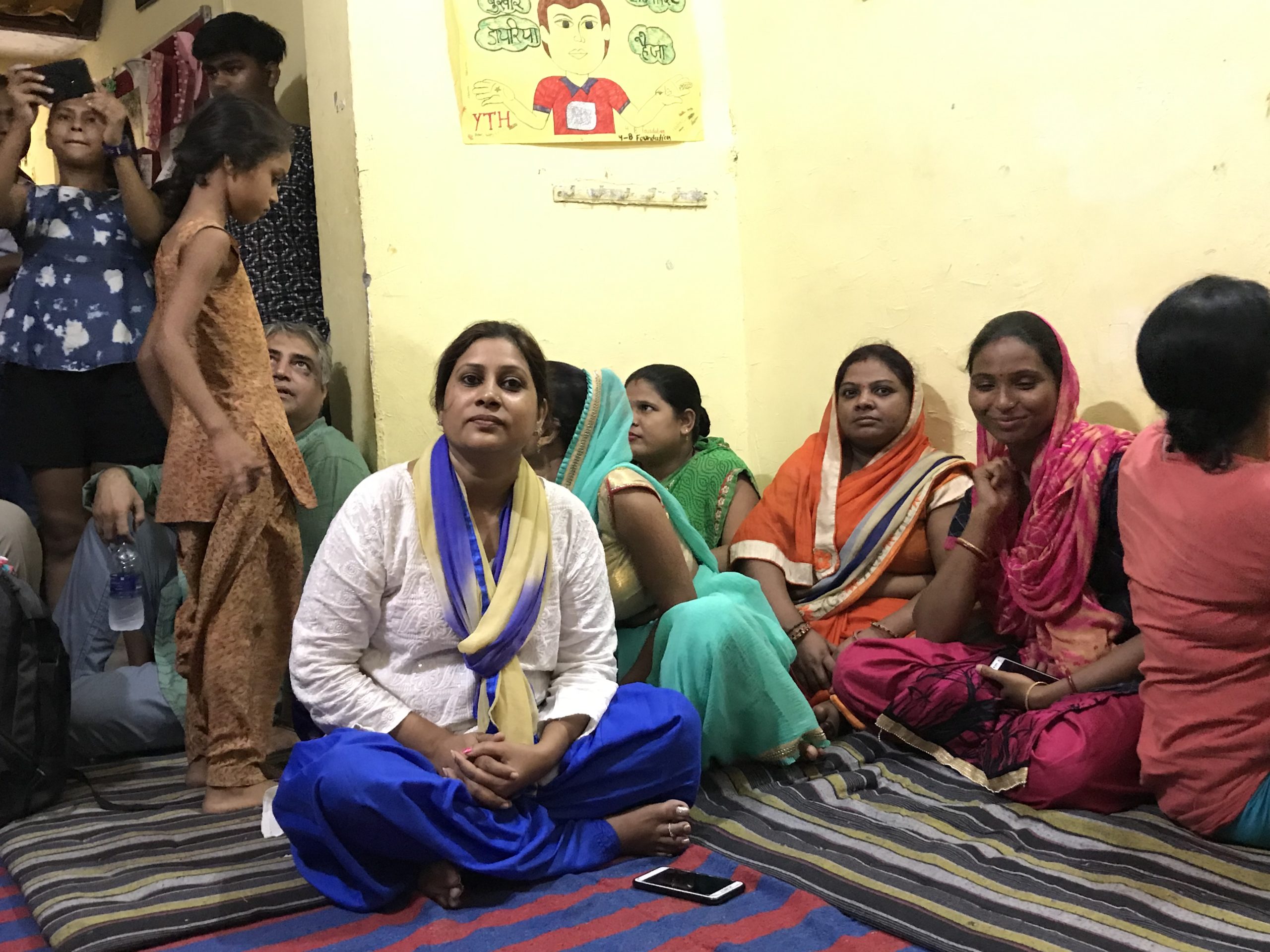 Sunita, the woman who worked in the community center, was a woman from the very community she served. She and the other women were there to share their stories with us. We learned through a translator that children must register for school via the internet. As education is a way out of poverty, this was a hurdle for families in the slum community where computers or the internet were not available to them. Thanks to a designated gift sent through Global Ministries, CSEI helped provide a single computer that resides in the community center for registering children for school, enabling education opportunities for the hundreds of children in the community. Five hundred children and youth have benefited from having a computer in the community.
Sunita, the woman who worked in the community center, was a woman from the very community she served. She and the other women were there to share their stories with us. We learned through a translator that children must register for school via the internet. As education is a way out of poverty, this was a hurdle for families in the slum community where computers or the internet were not available to them. Thanks to a designated gift sent through Global Ministries, CSEI helped provide a single computer that resides in the community center for registering children for school, enabling education opportunities for the hundreds of children in the community. Five hundred children and youth have benefited from having a computer in the community.
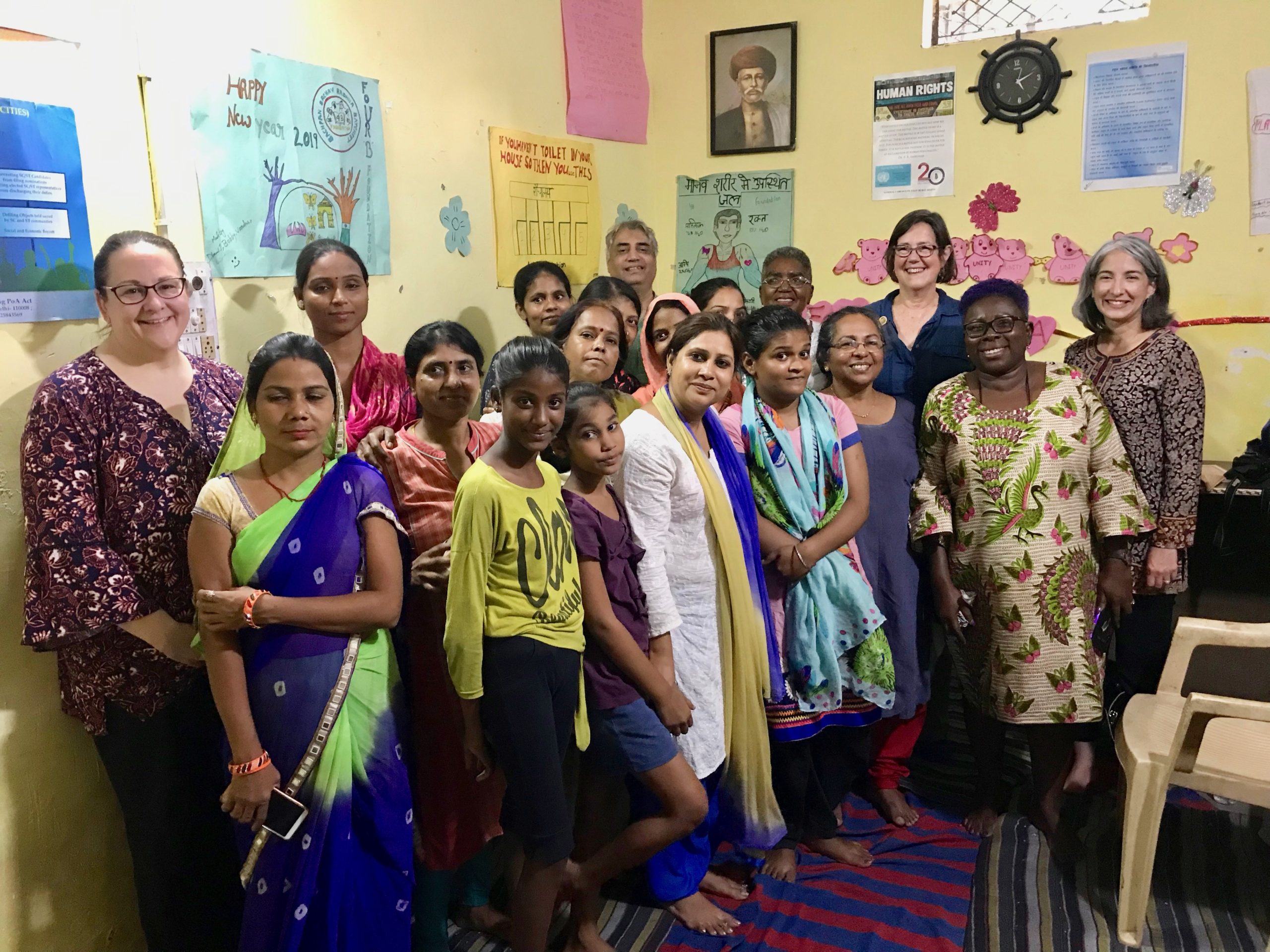 The women shared that they met often to discuss issues and concerns for themselves and their community. We learned that some children were dropping out of school because they needed to wait for the unpredictable water delivery to the community. The water could be delivered at any time, and since it was a life necessity for people living there, the young people had no choice but to wait for it. Working together with the community center and CSEI, the slum community was able to negotiate a regular delivery of water that arrived before school, enabling the youth to get vital education.
The women shared that they met often to discuss issues and concerns for themselves and their community. We learned that some children were dropping out of school because they needed to wait for the unpredictable water delivery to the community. The water could be delivered at any time, and since it was a life necessity for people living there, the young people had no choice but to wait for it. Working together with the community center and CSEI, the slum community was able to negotiate a regular delivery of water that arrived before school, enabling the youth to get vital education.
The women also shared that domestic abuse is very prevalent and that, with the support of other women, they were learning to stand up and end the abuse in some cases. Most importantly, the members of the community were learning that they had rights. This empowered them to enact changes that would hopefully lift future generations out of the slums.
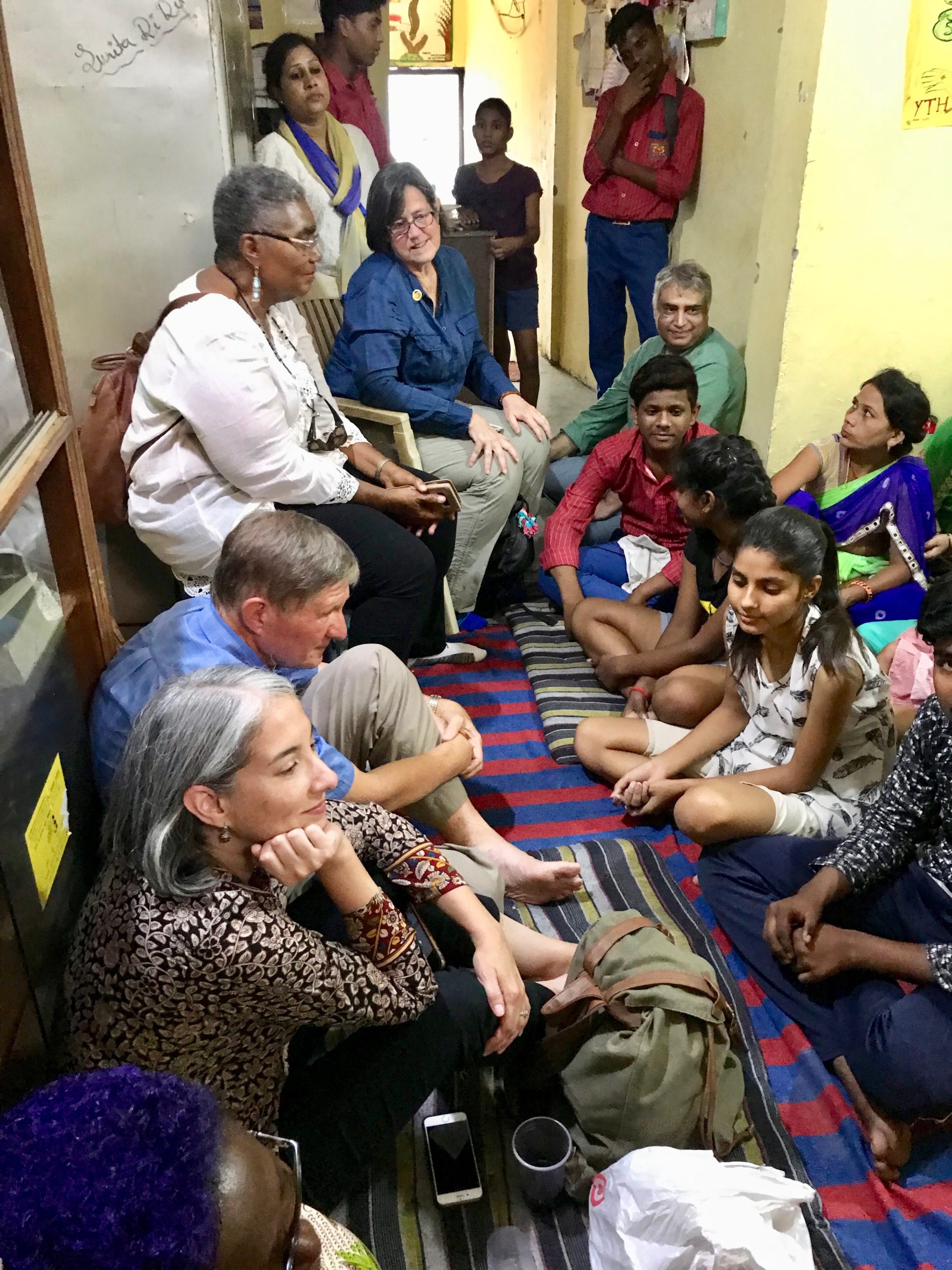 We heard from several of the young people, as well, although they were anxious to get back to studying for the important exams they had the next day. The young people shared how they had created puppet shows and dance shows to help educate other young people about their rights. One young lady won a prize for her choreography on a show. It was clear that children and young people are very intelligent and talented and were working hard to gain skills and education.
We heard from several of the young people, as well, although they were anxious to get back to studying for the important exams they had the next day. The young people shared how they had created puppet shows and dance shows to help educate other young people about their rights. One young lady won a prize for her choreography on a show. It was clear that children and young people are very intelligent and talented and were working hard to gain skills and education.
The people we met this day did nothing to put themselves into situations of such extreme poverty. In India, it is believed that people are born into the social caste in which they belong, so the new friends we made were born into this life. While the caste system is constitutionally illegal in India now, it is still engaged in socially. The stigma and castism make the challenge of lifting oneself out of poverty even more difficult.
I have always found beauty in brokenness. I have always been drawn to those who are imperfect, damaged, broken, like me. I think, like many people, I tried to smooth over the cracks, to make it appear that I was whole, normal. But our beauty is found in our brokenness, and sometimes that is easier to see in others than ourselves. I think about the people we met that day. I think about their brokenness. And I think about how their spirits have endured in spite of their brokenness. And that is where beauty is found. In HOPE. In the tenacity to believe and work toward a better future for their children and themselves.
Let us be open to receiving the light of God and of others through our broken places. May we be warmed by that light. May we see our purpose by that light. And most of all, may we, in all of our interactions, be the light that others need, reflecting the light of God’s love.
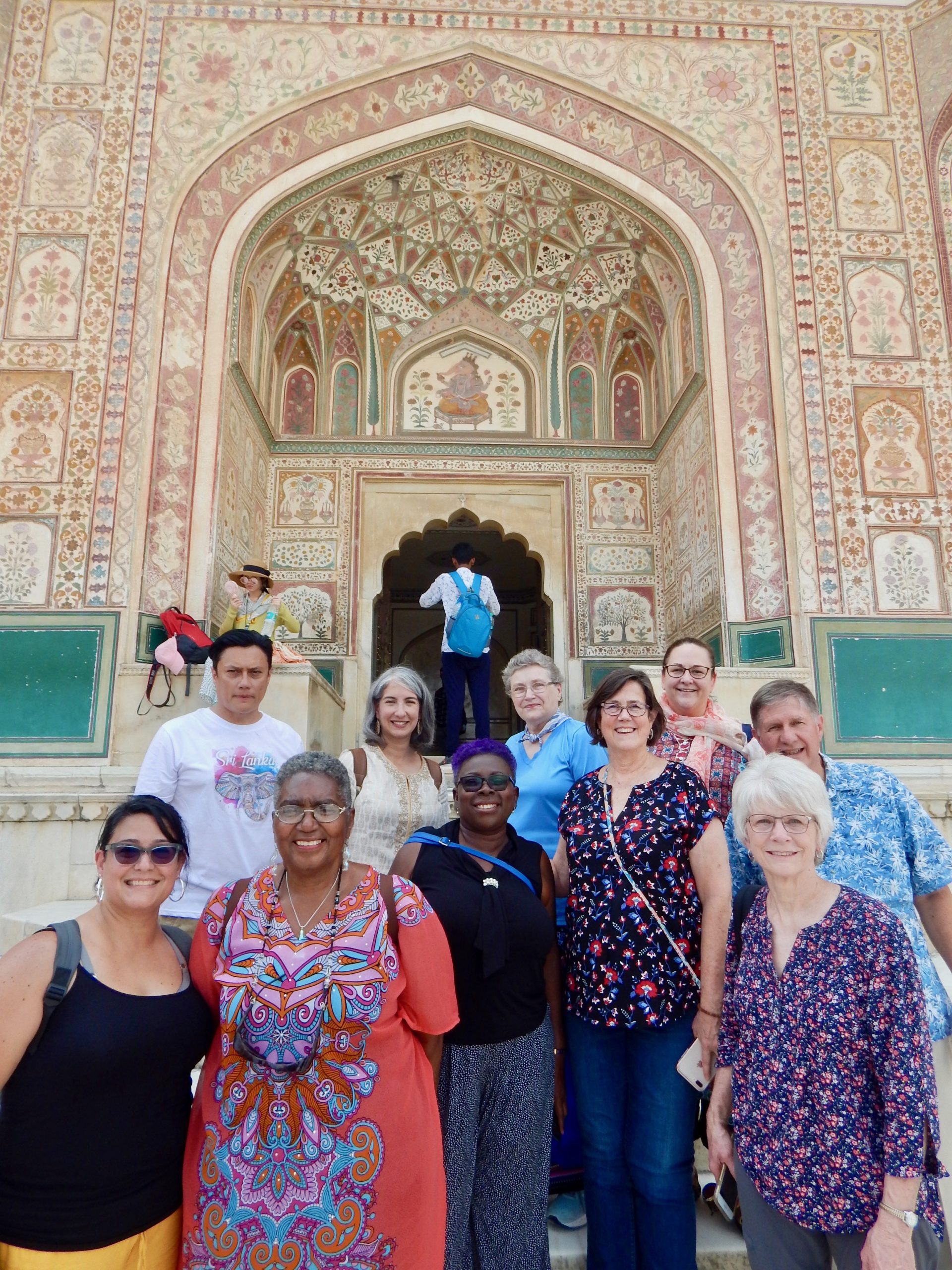 Day 6 – Sept. 20 – Jean Doane
Day 6 – Sept. 20 – Jean Doane
“We are a blest and a pilgrim people
Bound for the city of God….”
From You Are the Salt of the Earth, O People by Marty Hagen
By September 20, 2019, our group of Global Ministries Board and staff pilgrims had been together for just one week, yet in that short time, we had become a community learning together to listen for God’s word of hope in places we had never been before and among people whom we had never met.
In Sri Lanka, we were welcomed by leaders of the Church of the American Ceylon Mission. We visited their vocational school and boys’ home in the city of Batticaloa and learned about their work with marginalized people in other areas of the country. We mourned evidence of inter-religious violence and also heard about activities fostering multi-faith cooperation. In Delhi, we experienced first-hand the hope of children living without permanent dwellings who may expect a brighter future through after school programs from the Church of North India Board of Social Services, Indian Samaritans, and the Center for Social Equity and Inclusion.
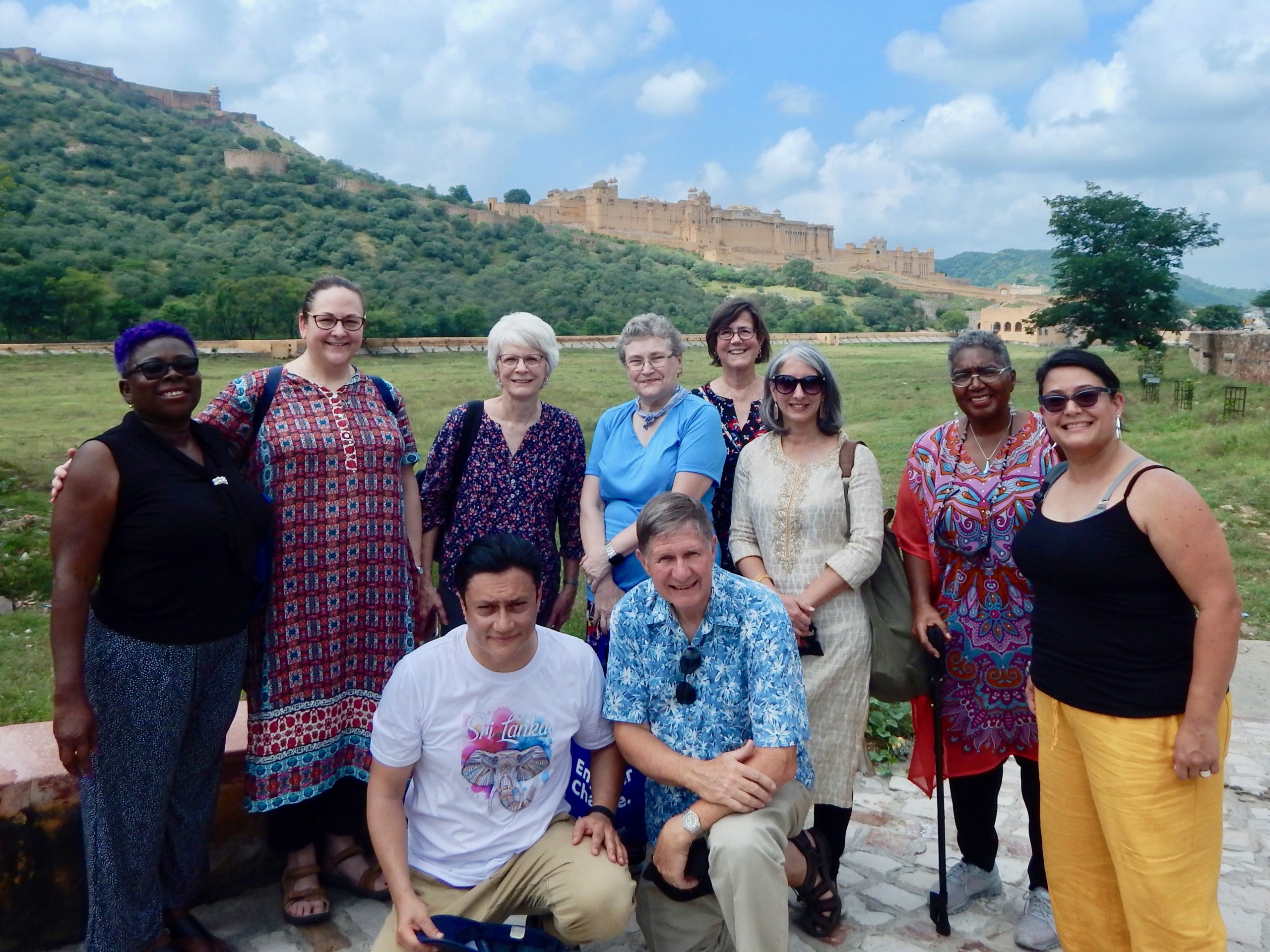 September 20 was a day of respite for us, an opportunity to be tourists in the ancient city of Jaipur. We toured the Amber Palace and the Pink City, both monuments to the power and ingenuity of the 17th-century Mughul ruler, Raja Jai Singh. All went well until I went to board our bus for the trip to our hotel. Suddenly, I was gripped by a terrible leg cramp. I cried out, unable to hide my distress. That is when I learned that our band of pilgrims had become a community. Loving hands massaged my calf with healing salve. Other hands added oral rehydration salts to my water bottle. Those needing to sit in the front to prevent motion sickness yielded this seat to me so I could stretch out my leg. I give God thanks and praise for placing me with this group of amazing people who were not simply tourists or travelers seeing the sights, but rather pilgrims “bound for the City of God.”
September 20 was a day of respite for us, an opportunity to be tourists in the ancient city of Jaipur. We toured the Amber Palace and the Pink City, both monuments to the power and ingenuity of the 17th-century Mughul ruler, Raja Jai Singh. All went well until I went to board our bus for the trip to our hotel. Suddenly, I was gripped by a terrible leg cramp. I cried out, unable to hide my distress. That is when I learned that our band of pilgrims had become a community. Loving hands massaged my calf with healing salve. Other hands added oral rehydration salts to my water bottle. Those needing to sit in the front to prevent motion sickness yielded this seat to me so I could stretch out my leg. I give God thanks and praise for placing me with this group of amazing people who were not simply tourists or travelers seeing the sights, but rather pilgrims “bound for the City of God.”
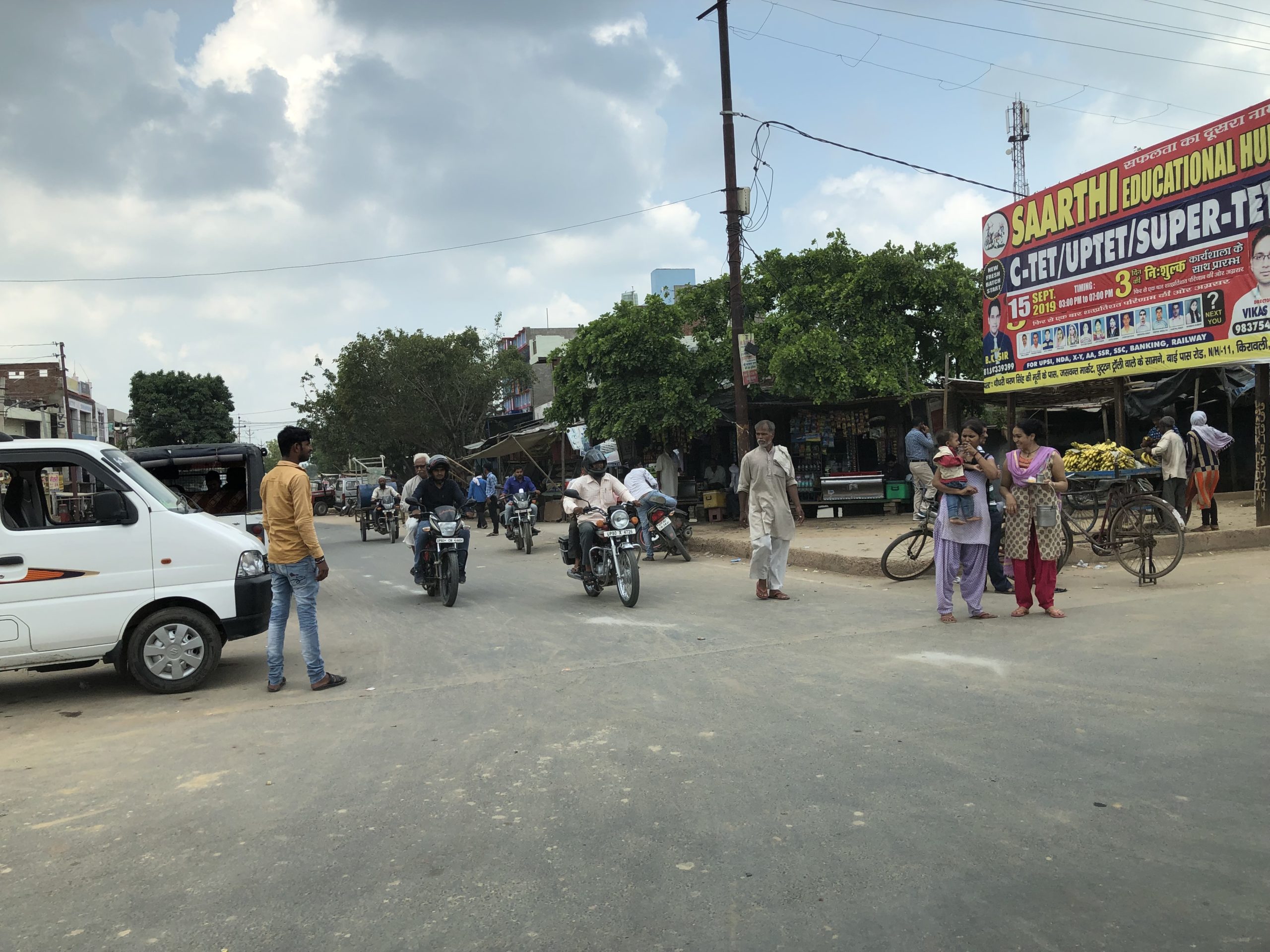 Day 7 – Sept. 21 – Cyndy Twedell
Day 7 – Sept. 21 – Cyndy Twedell
A Day of Contrasts, Community, and Contemplation
The chaotic, muddy streets of Agra presented a profound contrast to the pristine, majestic marble of the Taj Mahal. And what an amazing experience! Our hearts were moved to behold both the everyday moments and the extravagant memorial.
With just two days until our return home, we were up early for breakfast together and a four-hour drive from Jaipur to Agra to see the incredible icon of India, one of the seven great wonders of the world. The Taj Mahal, commissioned in 1632 by the Mughal emperor Shah Jahan, was built (over the next twenty years) to house the tomb of his favorite wife, Mumtaz Mahal. The Taj Mahal is breathtaking beauty, a love poem, an attempt to replicate on earth her house in paradise.
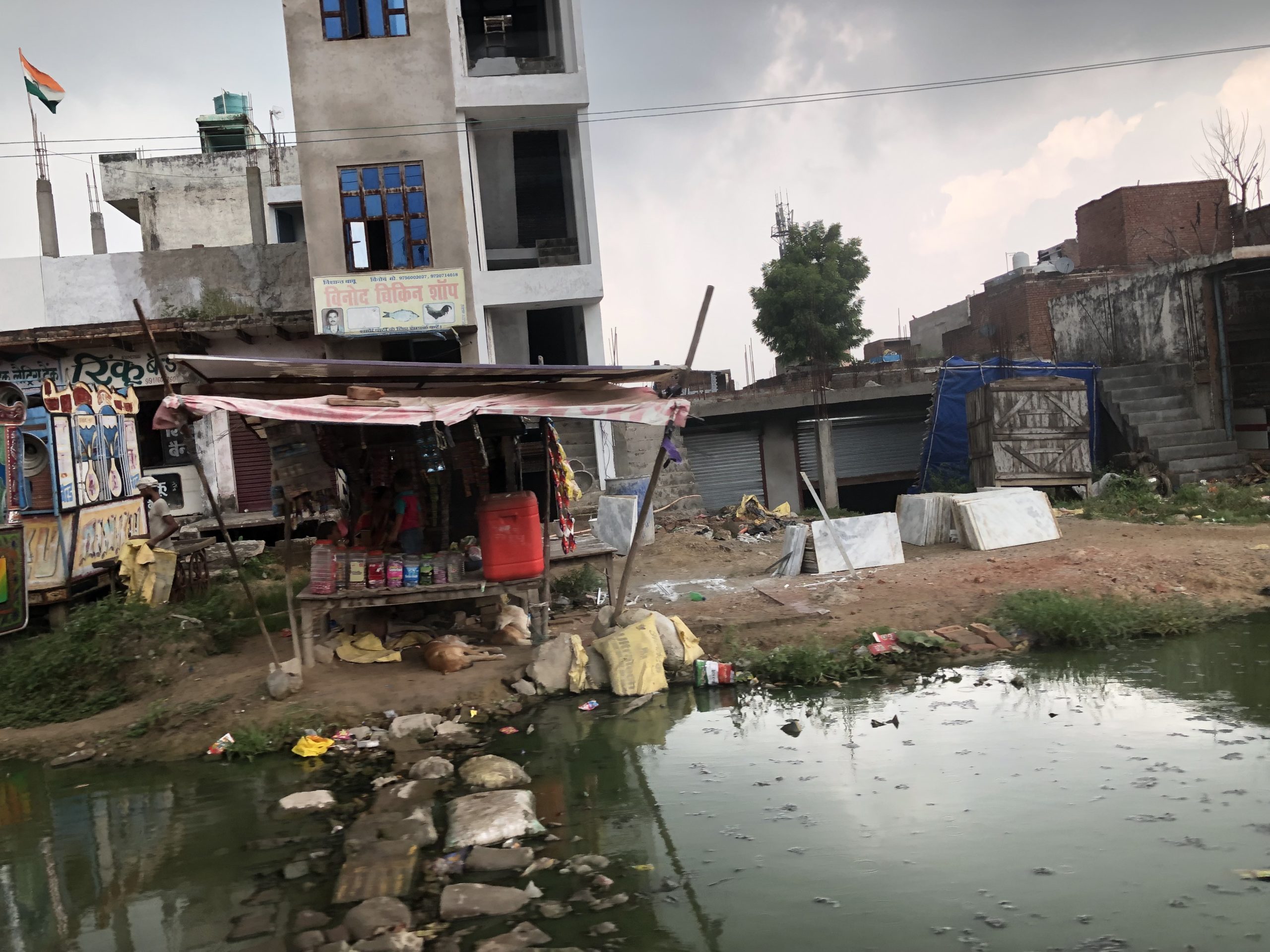 Just outside the gates of the lavish splendor of the Taj Mahal life buzzed in full color as we met the eyes of people begging and selling and living life in all its depth and diversity. I could not help but notice the contrast. Another four-hour drive back to Delhi awaited us and the sounds of the streets reverberated with honking horns and activity. The rhythm of the road ebbed and flowed as our skillful driver made room for smaller vehicles to his left and watched for larger vehicles and trucks on the right. The road was full of cars and trucks and tractors and busses and motorbikes and three-wheeled “taxis” as well as cattle, people, goat herds and an occasional camel carrying its load. The highway lane markings served merely as suggestions as the traffic honked its way through the colorful chaos.
Just outside the gates of the lavish splendor of the Taj Mahal life buzzed in full color as we met the eyes of people begging and selling and living life in all its depth and diversity. I could not help but notice the contrast. Another four-hour drive back to Delhi awaited us and the sounds of the streets reverberated with honking horns and activity. The rhythm of the road ebbed and flowed as our skillful driver made room for smaller vehicles to his left and watched for larger vehicles and trucks on the right. The road was full of cars and trucks and tractors and busses and motorbikes and three-wheeled “taxis” as well as cattle, people, goat herds and an occasional camel carrying its load. The highway lane markings served merely as suggestions as the traffic honked its way through the colorful chaos.
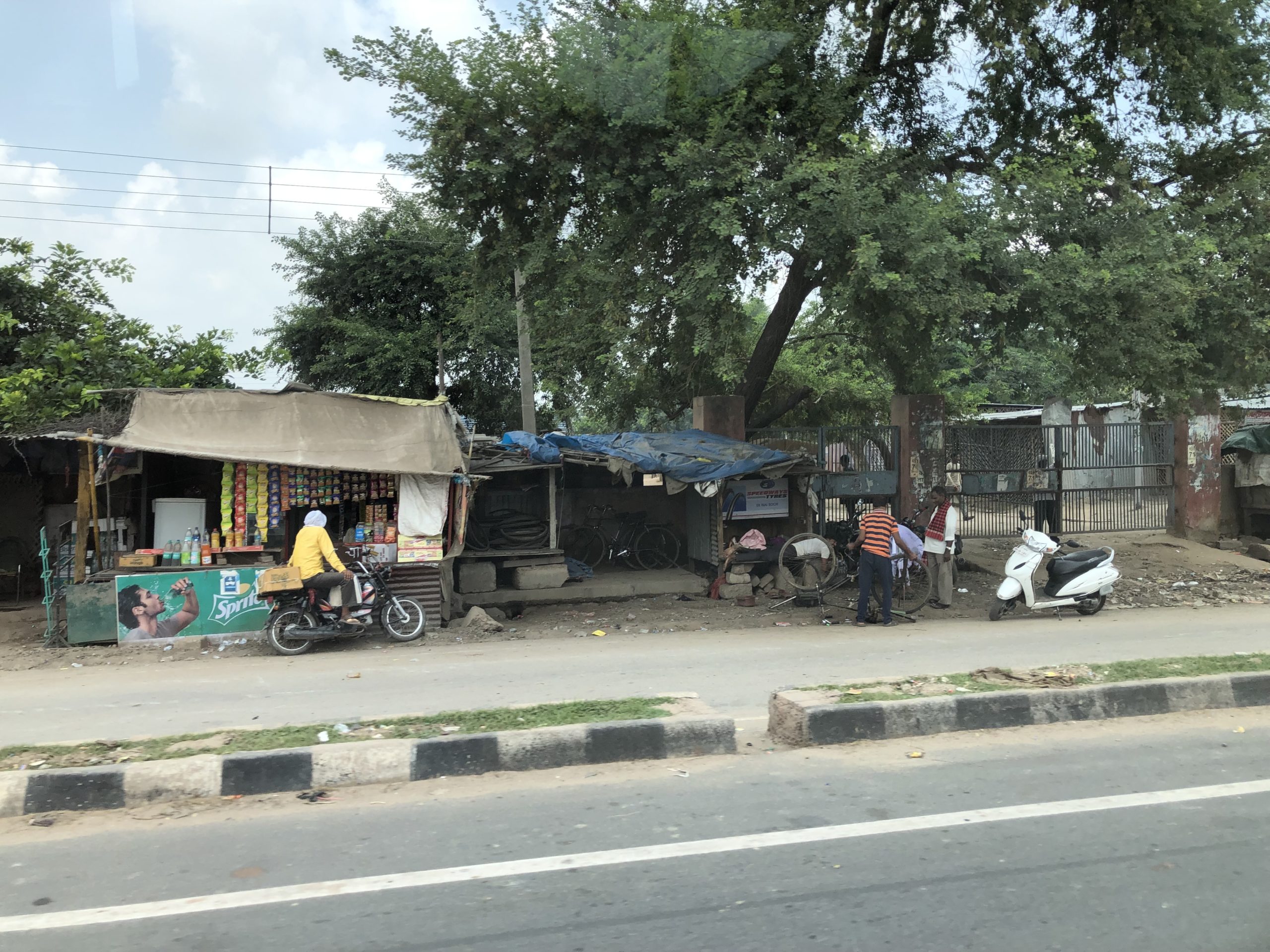 And inside the bus, we made room for each other. Eight-plus hours together in the close quarters of a bus can do that! We got to know one another at our best and in our less than best. We prayed for each other, accommodated our (my!) motion sickness and irritability, learned from each other, lovingly accepted our imperfections and patiently helped each other out when we needed it. Our small bus was filled with laughter, thoughtful conversations and great stories. We shared observations. And snacks. And toilet paper when we made our regular “washroom” stops. God’s loving
And inside the bus, we made room for each other. Eight-plus hours together in the close quarters of a bus can do that! We got to know one another at our best and in our less than best. We prayed for each other, accommodated our (my!) motion sickness and irritability, learned from each other, lovingly accepted our imperfections and patiently helped each other out when we needed it. Our small bus was filled with laughter, thoughtful conversations and great stories. We shared observations. And snacks. And toilet paper when we made our regular “washroom” stops. God’s loving 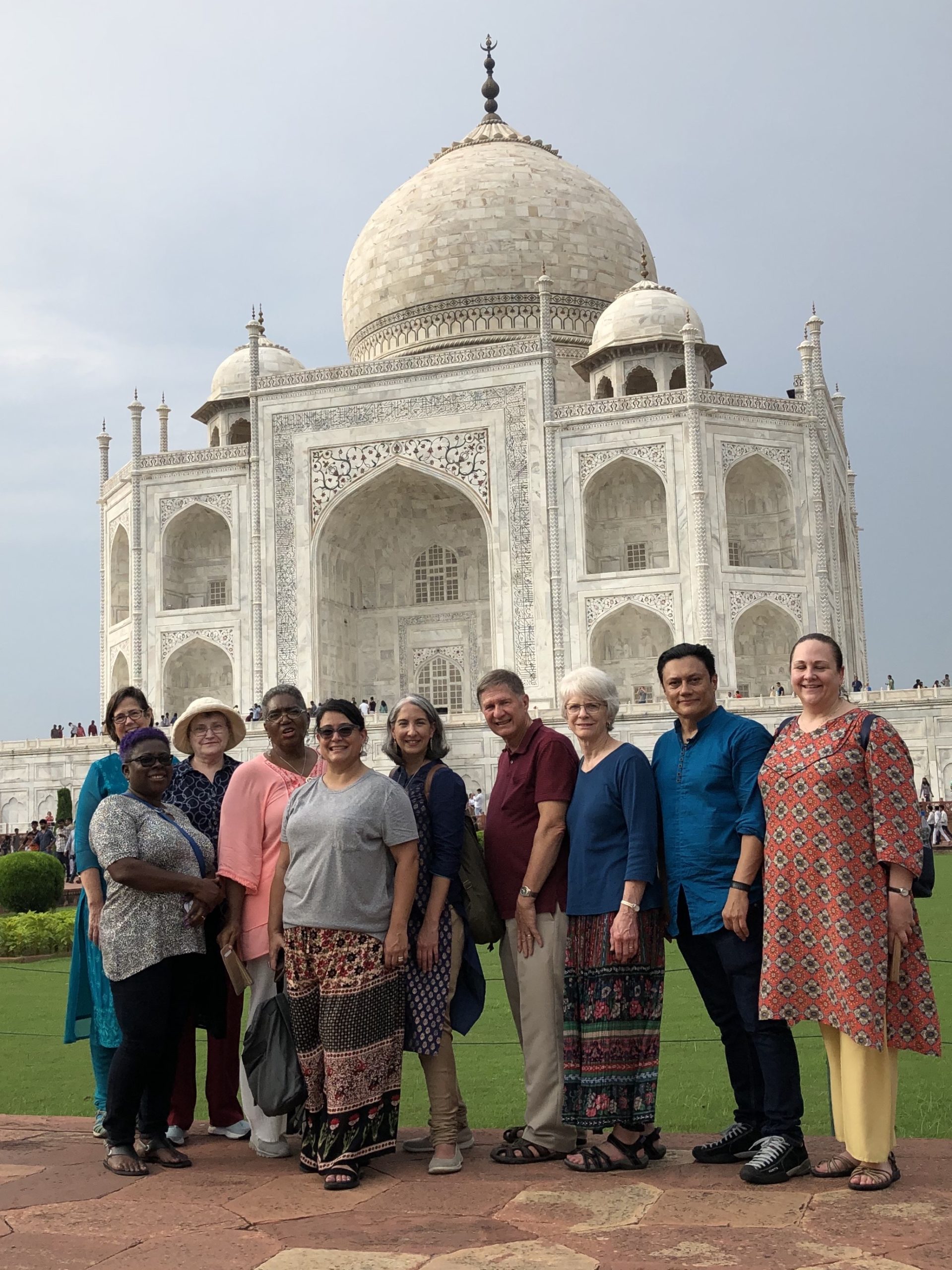 Spirit was weaving us together as we cared for each other, checked in on each other, connected deeply with each other.
Spirit was weaving us together as we cared for each other, checked in on each other, connected deeply with each other.
The long drive also provided time to gratefully contemplate the blessing and gift of pilgrimage—the opportunity to know God’s loving presence in another, to receive amazing hospitality as we listened and learned from our generous hosts, to humbly walk together on Holy Ground.
I give thanks to God for our courageous and compassionate partners working tirelessly for God’s justice, peace and equality in Sri Lanka and India. And for the chance to share in the transformational work of Global Ministries. Part of my heart remains forever there.
Day 8 – Sept. 22 – Nestor Gomez
Meeting the Stranger on the Road to Sri Lanka and India
Luke 24: 13-32
Néstor Gómez
While boarding my last flight in Chicago to return home in Stamford, CT, I was meditating about our trip Together in Hope as part of the Southern Asia Initiative. In the previous days, I had been reading the well-known story On the Road to Emmaus (most scholars believe that Emmaus was located adjacent to the modern suburb of Moza by the Jerusalem-Tel Aviv highway.) The story tells that two individuals were walking northwest to a small town called Emmaus, 11 kilometers from Jerusalem. Two men, a man and a woman? It seems that they were walking back home, or they were running away from the political, social and religious tension in Jerusalem. Just recall the scripture says that they were talking the same day a group of women visited the tomb where Jesus’ body was kept. I assume they were both good friends talking sadly about what the women had testified.
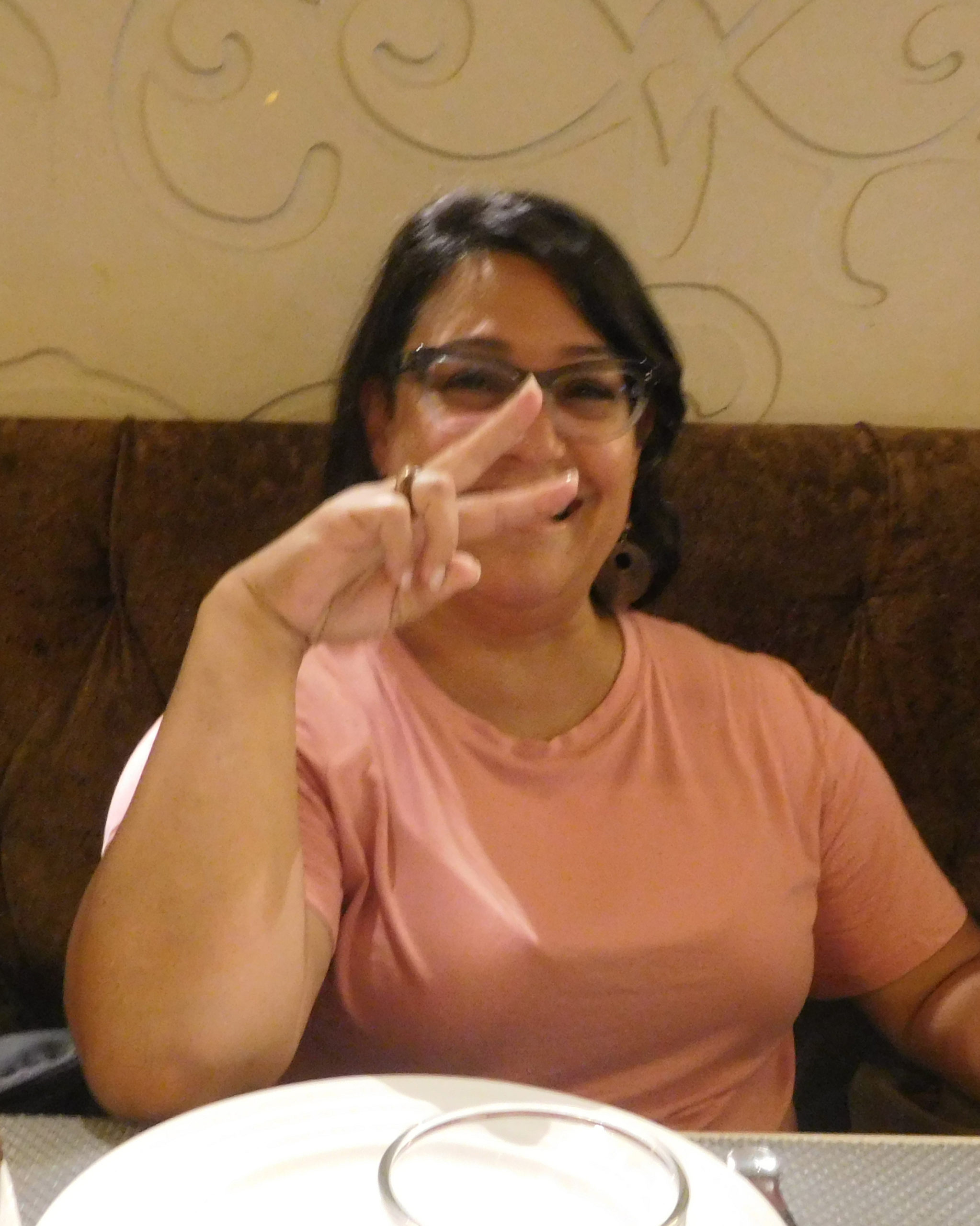 How great is to have friends, good friends. All those whom you can walk in a park and talk about your concerns, talk about your difficulties, talk about your family, talk about anything. Did we have a good friend on this trip with whom we could talk and feel in a safe place? Did we meet someone who is becoming a friend in this short pilgrimage? In my case, Yesenia was that travel person who is becoming a good friend. She’s originally from Puerto Rico, La Isla del Encanto (but I must confess that I had never heard the word “Puelto Rico” so many times in my life.)
How great is to have friends, good friends. All those whom you can walk in a park and talk about your concerns, talk about your difficulties, talk about your family, talk about anything. Did we have a good friend on this trip with whom we could talk and feel in a safe place? Did we meet someone who is becoming a friend in this short pilgrimage? In my case, Yesenia was that travel person who is becoming a good friend. She’s originally from Puerto Rico, La Isla del Encanto (but I must confess that I had never heard the word “Puelto Rico” so many times in my life.)
While walking and talking on the road to Emmaus, a stranger walked along with them and started asking questions. They were urged to share the news about what had happened in Jerusalem with the man of Nazareth: “He was a prophet, powerful in word and deed before God and all the people.” If we read the story attentively, we can see that both disciples shared the news avidly. They were walking together for more than two hours approximately. One of the disciples called Cleopas asked the stranger: “Are you the only one visiting Jerusalem who does not know the things that had happened there in these days?”
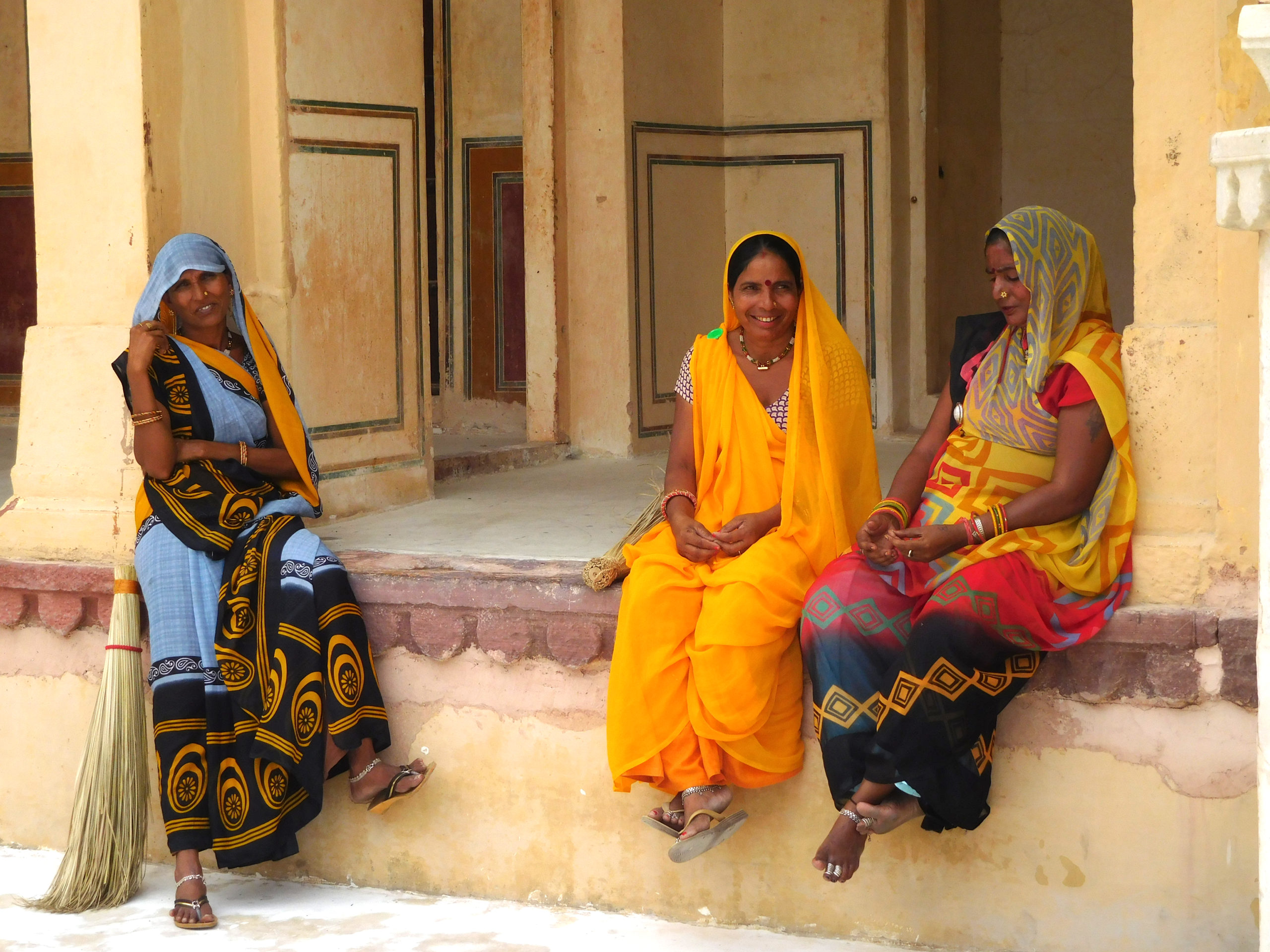 How many strangers did we meet on this trip to Sri Lanka and India? Did we meet a stranger or a strange person? Perhaps, we met a strange person, someone who behaved strangely and made us feel uncomfortable. The real truth is that if we wanted to improve our cultural competency we had to meet with strangers whenever and wherever we could. Almost everything and everyone around us was different: the people, the spaces, the temples, the architecture, the food and clothing styles, the language, etc. However, the text in the gospel of Luke gives us a key component that is fundamental when we meet a stranger: the question. The stranger asked an interesting question to these disciples and they could share their concerns, their story. The question opens new possibilities, new opportunities to talk with confidence. It is an excellent way to build relationships. But there are different types of questions: those that open the space to hear and learn, and those that assume certain things to happen and accepted as true. Read what Cleopas asked: “Are you the only one visiting Jerusalem who does not know the things that had happened there in these days?” (An ancient Christian tradition says that Cleopas was the brother of St Joseph.)
How many strangers did we meet on this trip to Sri Lanka and India? Did we meet a stranger or a strange person? Perhaps, we met a strange person, someone who behaved strangely and made us feel uncomfortable. The real truth is that if we wanted to improve our cultural competency we had to meet with strangers whenever and wherever we could. Almost everything and everyone around us was different: the people, the spaces, the temples, the architecture, the food and clothing styles, the language, etc. However, the text in the gospel of Luke gives us a key component that is fundamental when we meet a stranger: the question. The stranger asked an interesting question to these disciples and they could share their concerns, their story. The question opens new possibilities, new opportunities to talk with confidence. It is an excellent way to build relationships. But there are different types of questions: those that open the space to hear and learn, and those that assume certain things to happen and accepted as true. Read what Cleopas asked: “Are you the only one visiting Jerusalem who does not know the things that had happened there in these days?” (An ancient Christian tradition says that Cleopas was the brother of St Joseph.)
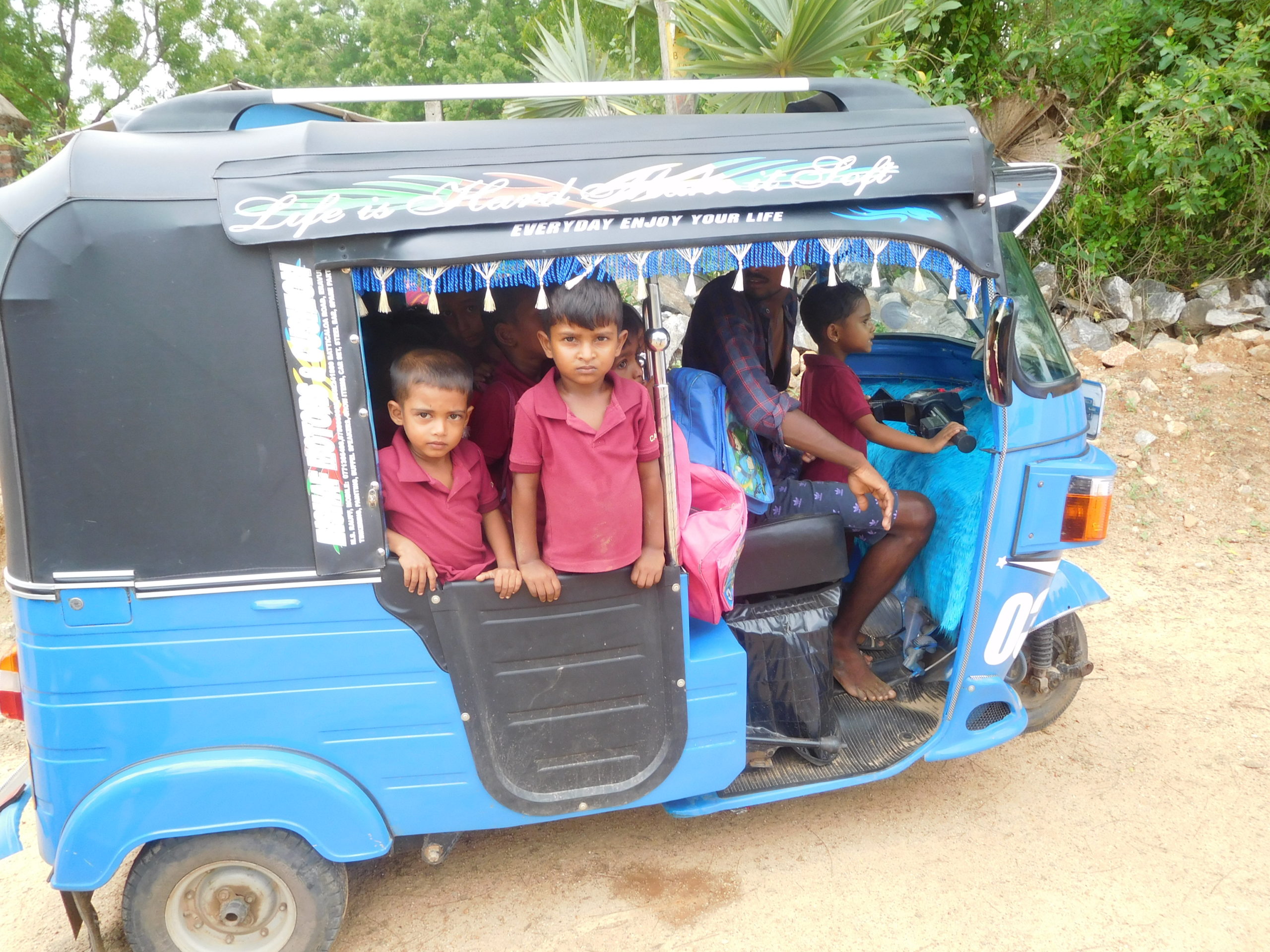 What type of questions did we ask the strangers we met in this pilgrimage? Did we open new spaces for knowledge and learning? Did we assume things or ideas that we take for granted? I love the question that Jean asked me when we were having breakfast in the Hotel Park Regis in Jaipur: “Néstor, I was curious about your talking the other day. Please, can you tell me more about your experience facing racism?”
What type of questions did we ask the strangers we met in this pilgrimage? Did we open new spaces for knowledge and learning? Did we assume things or ideas that we take for granted? I love the question that Jean asked me when we were having breakfast in the Hotel Park Regis in Jaipur: “Néstor, I was curious about your talking the other day. Please, can you tell me more about your experience facing racism?”
Two perceptions were shared about the man of Nazareth crucified in Jerusalem: The viewpoint of the two disciples walking to Emmaus and the interpretation of the stranger about those thoughts, but these points of view were intercepted, they had something in common: the violence perpetrated to an innocent. When we visited the Mosque and the Protestant church in Batticaloa, I could see the death of innocent people. On August 3, 1990, the Liberation Tigers of Tamil Eelam (LTTE) entered the Meera Grand Jummah Masjith in Kattakundy and killed over 150 men and boys. Before Easter mass this year 2019, a suicide bombing occurred in the Protestant Zion Church in Batticaloa, killing around 30 and wounded more than one hundred. No matter what interpretation I could have had about these events, the tragedy behind them took me back to my own story of violence in my homeland, Medellín. Those two stories in Sri Lanka reminded me of my younger days when I lived the tragic moments in Medellín and other places in Colombia. Medellín was once known as the most violent city in the world due to the drug cartels at the end of the 1980s (that stigma remains until today.) Their stories of suffering overlapped with my own story of pain. I recall that that day when we visited those sacred spaces, Lorna asked me: “Why have you been so quiet?” I responded: “In the midst of what I am observing here I cannot speak.” I was crying inside my heart! That night I went to the hotel room and knelt praying and crying out in tears to heaven.
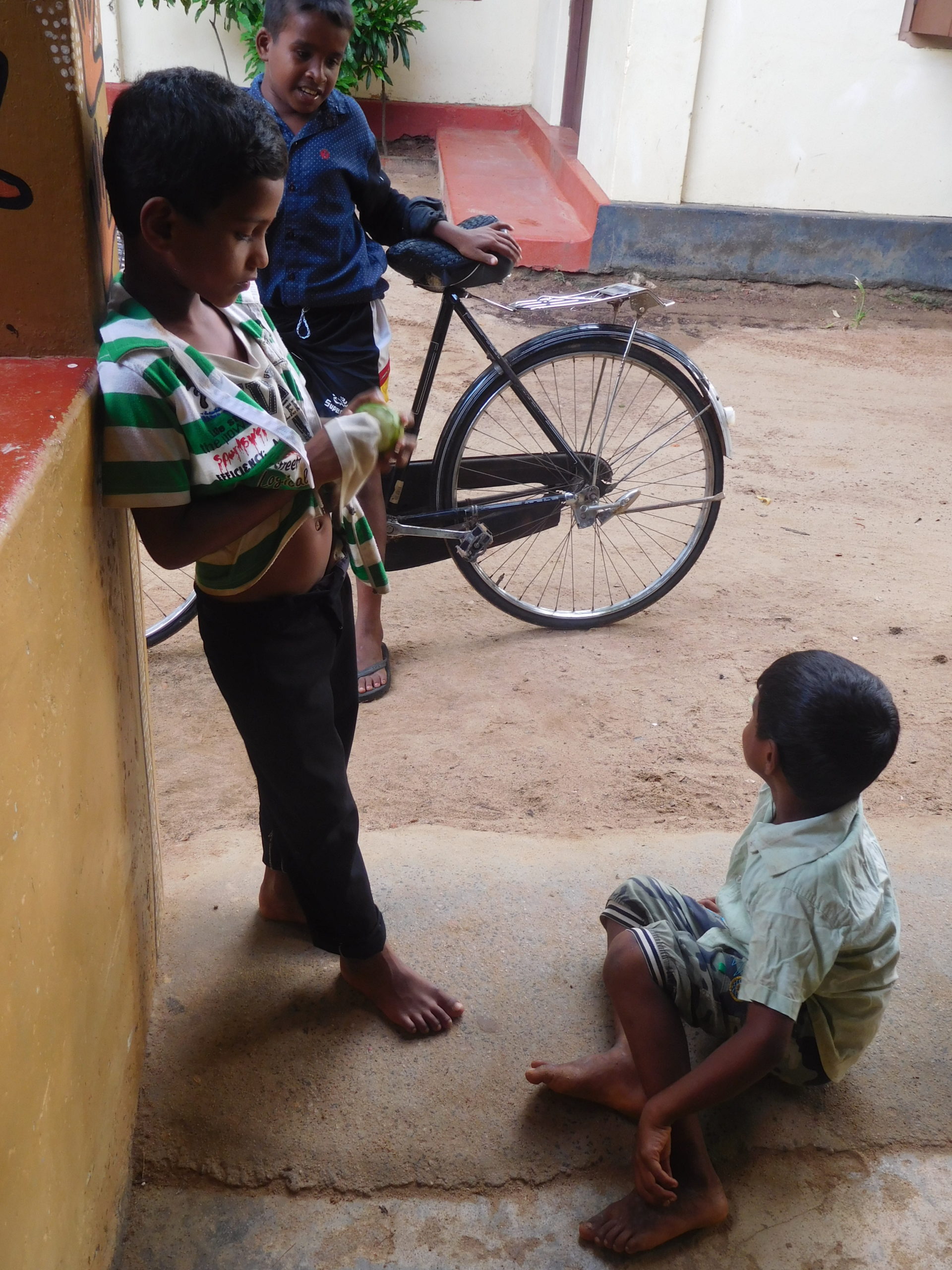 Could we put ourselves in their shoes? Could we understand the stories they shared about gender issues or religious fundamentalism? Can we feel the pain of people who are suffering around us? Can we move out of our zone of comfort and cross the boundaries of gender, racism, sexism, classism and all the “isms” we have created in our churches and societies?
Could we put ourselves in their shoes? Could we understand the stories they shared about gender issues or religious fundamentalism? Can we feel the pain of people who are suffering around us? Can we move out of our zone of comfort and cross the boundaries of gender, racism, sexism, classism and all the “isms” we have created in our churches and societies?
The story of the gospel of Luke concludes when the two disciples invited the stranger to stay with them because it was nearly evening. They were at the table praying and sharing bread. The stranger disappeared and their eyes were opened. They asked each other: “Were not our hearts burning within us while he talked with us on the road and opened the scripture to us?”
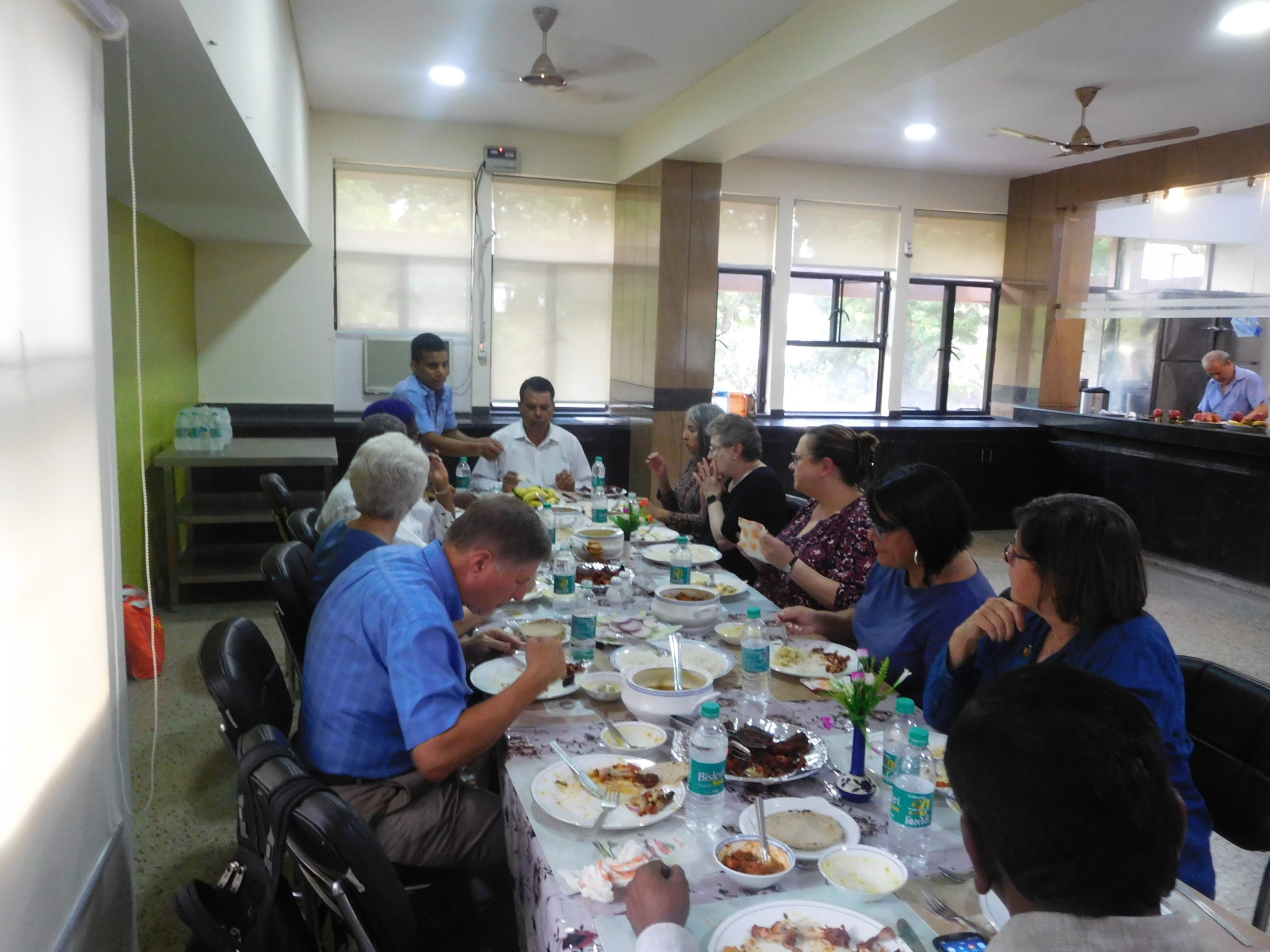 We were seated at the table of strangers speaking in Hindi, Tamil, Spanish, English, among other languages. I am sure not all of us understand the main languages besides English. We were praying, breaking paratha flatbread, and talking to each other. (That flatbread especially melted in my mouth when I dipped it in the curry sauce. It was so tasty!) We heard – and saw – their stories in lectures, testimonies, reports, pamphlets, books, photographs, service, and hospitality. Stories that were recounted face-to-face in presence and place. Stories of survival that gave us hope and empowered us to continue our journey with God and the marginalized. Were not our hearts burning within us while they were talking with us on the road to Sri Lanka and India? Were our souls not filled with the Spirit of life when women, men, and youth shared bread with us every evening? Were our spirits not inspired by the beautiful smiles of those children in the St. John’s Vocational Training Centre in Batticaloa? Were our bodies not touched deeply when we received flower necklaces from children and women? Were our eyes not opened when we heard the powerful testimonies of the activists fighting for women’s rights in New Delhi or when we heard the stories of the Church of North India? My eyes were opened and could see Jesus when I observed these gracious people of God serving with passion and dedication. My mouth melted deliciously when I tasted the Spirit of curry in every word, in every social action of justice.
We were seated at the table of strangers speaking in Hindi, Tamil, Spanish, English, among other languages. I am sure not all of us understand the main languages besides English. We were praying, breaking paratha flatbread, and talking to each other. (That flatbread especially melted in my mouth when I dipped it in the curry sauce. It was so tasty!) We heard – and saw – their stories in lectures, testimonies, reports, pamphlets, books, photographs, service, and hospitality. Stories that were recounted face-to-face in presence and place. Stories of survival that gave us hope and empowered us to continue our journey with God and the marginalized. Were not our hearts burning within us while they were talking with us on the road to Sri Lanka and India? Were our souls not filled with the Spirit of life when women, men, and youth shared bread with us every evening? Were our spirits not inspired by the beautiful smiles of those children in the St. John’s Vocational Training Centre in Batticaloa? Were our bodies not touched deeply when we received flower necklaces from children and women? Were our eyes not opened when we heard the powerful testimonies of the activists fighting for women’s rights in New Delhi or when we heard the stories of the Church of North India? My eyes were opened and could see Jesus when I observed these gracious people of God serving with passion and dedication. My mouth melted deliciously when I tasted the Spirit of curry in every word, in every social action of justice.
Global Minitries Southern Asia Initiative
Global Ministries People to People Pilgrimage Program

